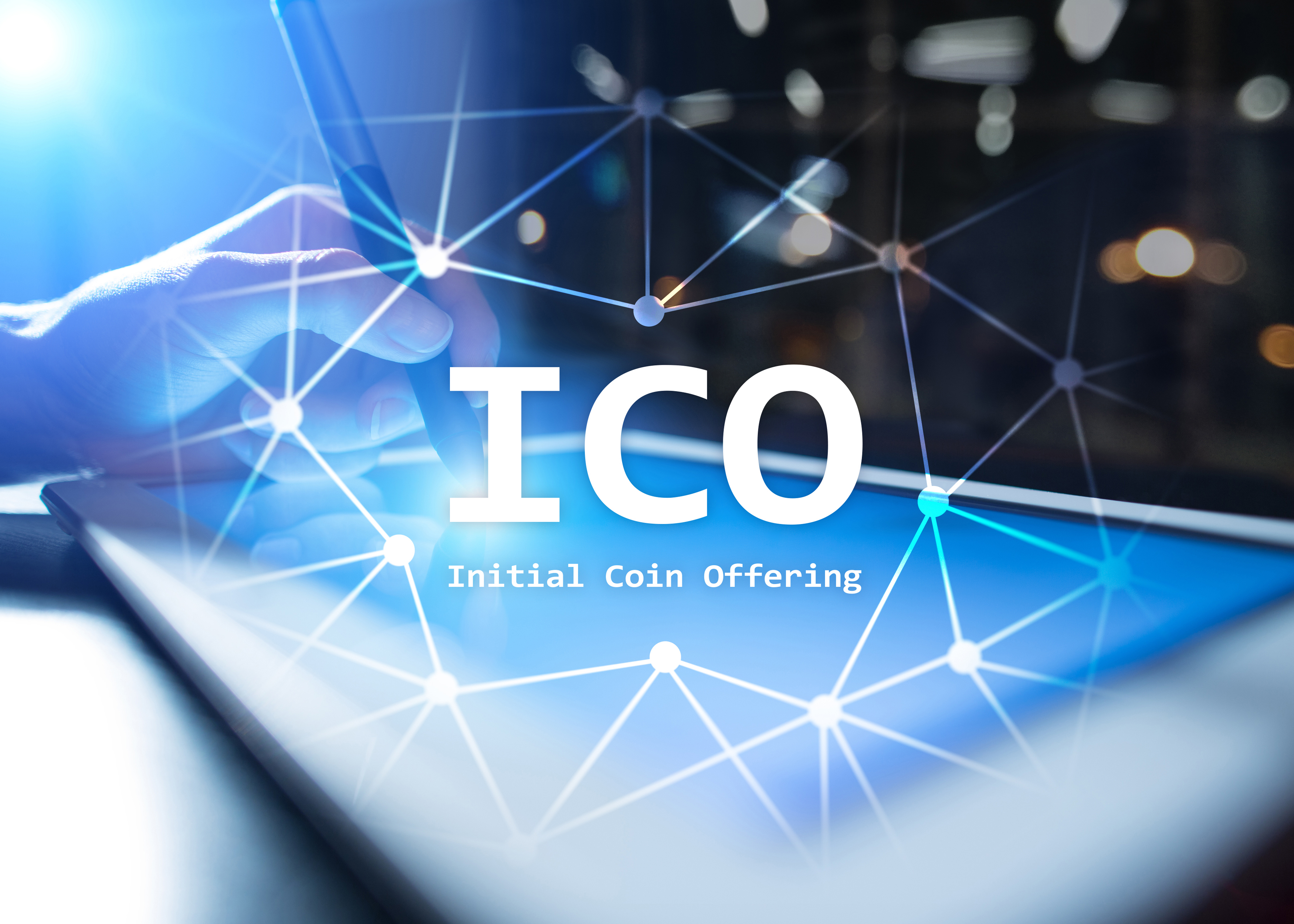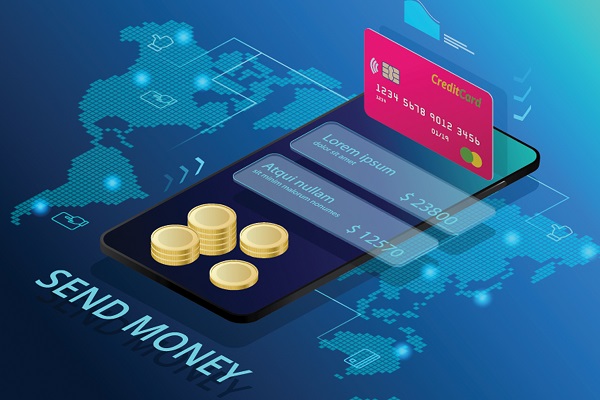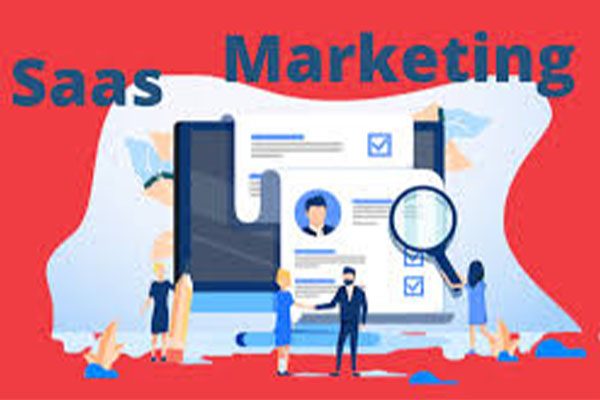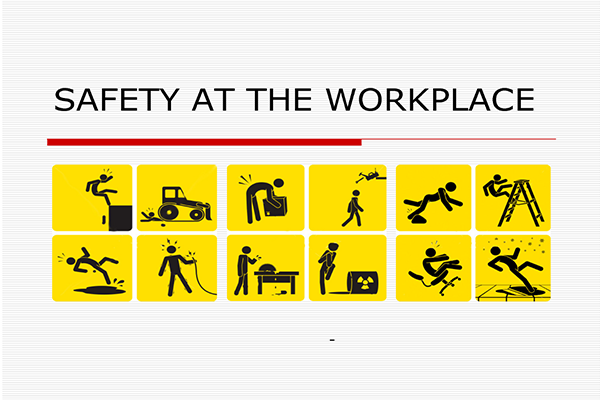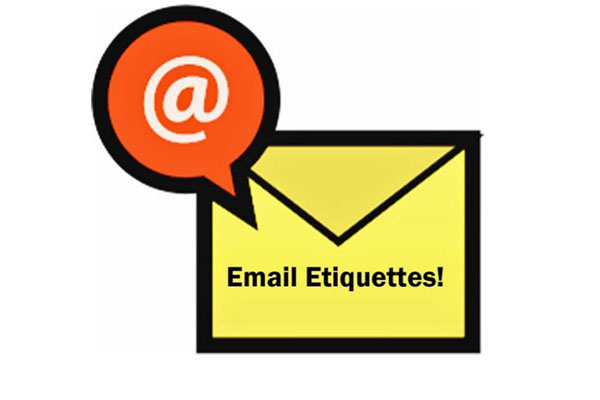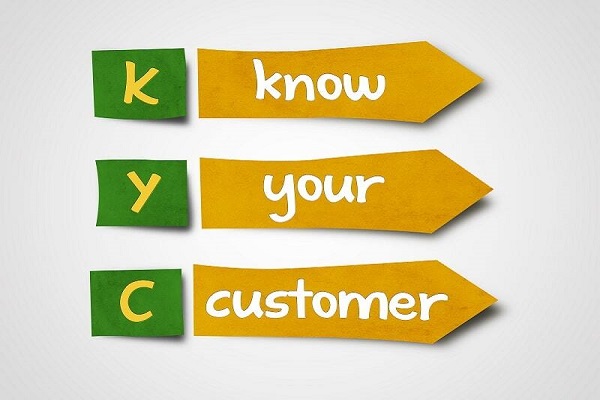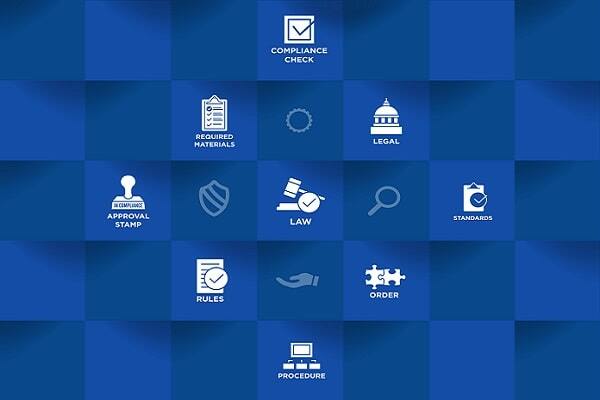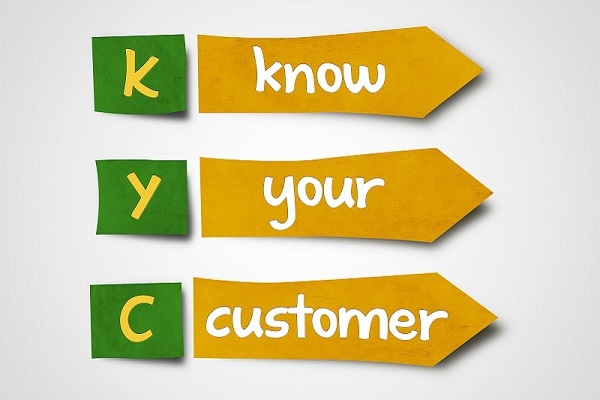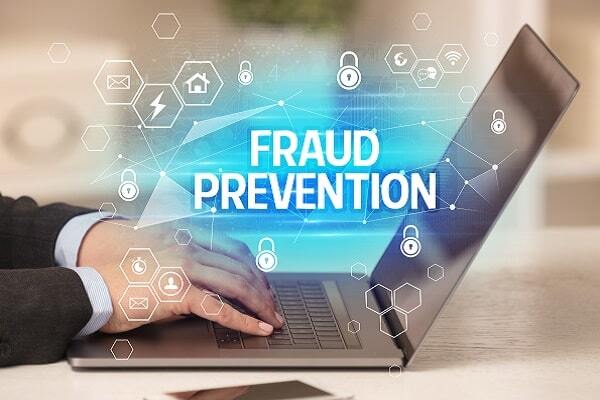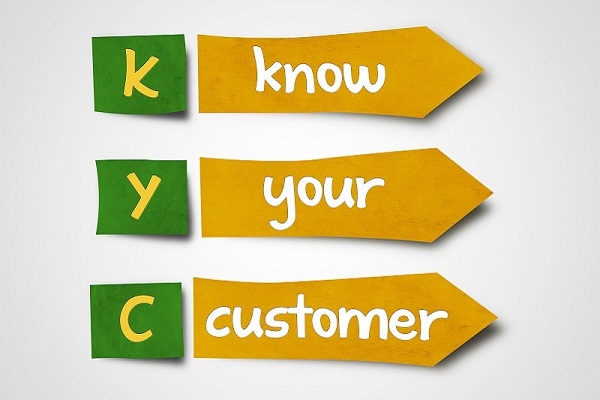Welcome to PayBitoPro Learning Programs. Learn more about blockchain technology from globally established leading blockchain specialist and be a Certified Blockchain Expert. Enroll today, take the test and get your blockchain certification.
Available courses
Anger Management Module
Introduction
Anger management is a psycho-therapeuƟc program for anger prevenƟon and control. It
has been described as deploying anger successfully. Anger is frequently a result of
frustraƟon, or of feeling blocked or thwarted from something the subject feels is important.
Anger can also be a defensive response to underlying fear or feelings of vulnerability or
powerlessness. Anger management programs consider anger to be a moƟvaƟon caused by
an idenƟfiable reason which can be logically analysed and addressed.
Anger used disorders oŌen co-occur, increasing the risk for negaƟve consequences such as
physical aggression, self-harm, distressed relaƟonships, loss of a job, or criminal jusƟce
involvement. According to a 2014 meta-analysis of 23 studies, nearly half of people who
commiƩed homicides were under the influence of alcohol and 37 percent were intoxicated.
Anger, violence, and associated traumaƟc stress can oŌen correlate with the iniƟaƟon of
drug and alcohol use and can be a consequence of substance use. Individuals who
experience traumaƟc events, for example, may experience anger and act violently, as well
as misuse drugs or alcohol.
The ideal goal of anger management is to control and regulate anger so that it does not
result in problems. Anger is an acƟve emoƟon that calls a person feeling it to
respond. People get into anger issues because both the insƟgator and insƟgated lack
interpersonal and social skills to maintain self-control. Research on affect and self-regulaƟon
shows that it occurs because negaƟve emoƟonal states oŌen impair impulse control. They
can train to respond to their anger as unwanted and unpleasant rather than react to its
need. Turning a blind eye or forgiveness is a tool to turn anger off. Geƫng enough sleep,
exercise and a good diet are tools which can assist in prevenƟng anger. Professionals who
deal with those who have trouble managing anger include occupaƟonal therapists, mental
health counsellors, drug and alcohol counsellors, social workers, psychologists and
psychiatrists.
PotenƟal causes for development of anger/problems
● Loss: A common trigger for anger is loss. This can be the loss of a loved one, the loss
of a job, or the loss of anything that is important to us. Loss can be difficult to cope
with, and it’s not uncommon to feel angry when we lose something important to us.
● Lack of Sleep: It’s no secret that lack of sleep can lead to irritability and moodiness.
When we’re Ɵred, we may be more likely to snap at those around us or lash out in
anger. If you find yourself geƫng angry more easily, it may be a sign that you need
to get more sleep.
● Betrayal: Betrayal can also cause us to feel angry. This is when someone we trust
breaks our trust or does something to hurt us. We may feel betrayed by a friend,
family member, or partner.
● Violence or abuse: Violence or abuse can also be a cause of anger. If we have been
the vicƟm of violence or abuse, it’s not uncommon to feel angry. This is because our
sense of safety and wellbeing has been violated.
● Feeling Trapped or helpless: Another common cause of anger is feeling trapped or
helpless. When we feel like we have no control over our lives or the situaƟon we are
in, it can be very frustraƟng. This sense of powerlessness can lead to feelings of rage
and despair.
● Poor life condiƟons: The direct consequences of poverty are well-known for limited
access to food, water, health care or educaƟon. This in turn increases stress and
leads to anger at a certain point of Ɵme.
● FrustraƟon: FrustraƟon can also lead to negaƟve self-talk that induces a negaƟve
spiral of thinking, leading to more aggressive behavior.
● Disturbances in personal relaƟonships: This can include things like arguments with
family or friends, breakups, and divorce. If we feel like our personal relaƟonships are
not going the way we want them to, it can lead to frustraƟon and anger.
● Jealousy: Jealousy is another emoƟon that can oŌen lead to anger. When we are
jealous, we may feel like someone has something that we don’t have, or that they
are beƩer than us in some way. This can lead to feelings of insecurity and envy,
which can quickly turn into anger.
● Loneliness: When you feel lonely, it can seem like people are cold and uncaring. You
may feel angry about your situaƟon and the way you've been treated. If you can
accept that people are what they are and choose the people you trust slowly and
carefully, you may be more open and inviƟng to others.
● Hunger: The term “hangry” was coined in 1918 to describe irritability or anger due to
being hungry. Anecdotal and clinical evidence shows that hunger can affect emoƟons
and behaviors and causes anger. Hunger is associated with stronger feelings of anger
and irritability and lower levels of pleasure. Also, Hunger is another physical trigger
for anger. When we are hungry, our blood sugar levels drop and we may become
irritable and short-tempered. This can lead to feelings of frustraƟon and rage.
● Depression: Anger can be a symptom of depression, which is characterized as ongoing feelings
of sadness and loss of interest lasting at least two weeks. Anger can be suppressed or overly
expressed. The intensity of the anger and how it’s expressed varies from person to person. If you
have depression, you may experience other symptoms. These include:
a. irritability
b. loss of energy
c. feelings of hopelessness
d. thoughts of self-harm or suicide
● Obsessive Compulsive Disorder: Obsessive compulsive disorder (OCD) is an anxiety
disorder that’s characterized by obsessive thoughts and compulsive behavior. A person with OCD
has unwanted, disturbing thoughts, urges, or images that drive them to do something repetitively.
For example, they may perform certain rituals, such as counting to a number or repeating a word
or phrase, because of an irrational belief that something bad will happen if they don’t. A 2011
studyTrusted Source found that anger is a common symptom of OCD. It affects approximately
half of people with OCD. Anger may result from frustration with your inability to prevent
obsessive thoughts and compulsive behaviors, or from having someone or something interfere
with your ability to carry out a ritual.
● AƩenƟon deficit hyperacƟvity disorder: AƩenƟon deficit hyperacƟvity disorder
(ADHD) is a neurodevelopmental disorder marked by symptoms such as inaƩenƟon,
hyperacƟvity, and or impulsivity. Symptoms usually start in early childhood and
conƟnue throughout a person’s life. Some people are not diagnosed unƟl adulthood,
which is someƟmes referred to as adult ADHD. Anger and short temper can also
occur in people of all ages with ADHD. Other symptoms include:
a. restlessness
b. problems focusing
c. poor Ɵme management or planning skills
● Oppositional defiant disorder (ODD): is a behavioral disorder that affects 1 to 16
percent of school-age children. Common symptoms of ODD include:
a. anger
b. hot temper
c. irritability
d. Children with ODD are oŌen easily annoyed by others. They may be defiant
and argumentaƟve.
● Bipolar disorder: Bipolar disorder is a brain disorder that causes dramaƟc shiŌs in
your mood. These intense mood shiŌs can range from mania to depression, although
not everyone with bipolar disorder will experience depression. Many people with
bipolar disorder may experience periods of anger, irritability, and rage.
● Intermittent Explosive Disorder: A person with intermiƩent explosive disorder (IED)
has repeated episodes of aggressive, impulsive, or violent behavior. They may
overreact to situaƟons with angry outbursts that are out of proporƟon to the
situaƟon.
Episodes last less than 30 minutes and come on without warning. People with the
disorder may feel irritable and angry most of the Ɵme.
Some common behaviors include:
● temper tantrums
● arguments
● fighting
● physical violence
● throwing things
● people with IED may feel remorseful or embarrassed after an episode.
There are three perspecƟve of potenƟal causes for development of problems or anger:
● Medical Causes
Drug addicƟon, alcoholism, a mental disability, biochemical changes and PTSD can all lead to
a person commiƫng an aggressive act against another person. Not having sufficient skills on
how to handle oneself when faced with aggression can lead to very undesirable outcomes.
These factors are typically associated with a heightened chance of anger, but there are
other, less-known factors that can lead to people acƟng in a negaƟve way. Prolonged or
intense anger and frustraƟon contributes to physical condiƟons such as headaches,
digesƟve problems, high blood pressure and heart disease. Problems dealing with angry
feelings may be linked to psychological disorders such as anxiety or depression. Angry
outbursts can be a way of trying to cope with unhappiness or depression.
Migraines: Frequent migraine can be associated with levels of aggression and the need for
anger management. A 2013 study examined migraines and its associaƟon with anger
problems in young children (Male, 11.2 years of age). The paƟents in the study were split
into low migraine aƩack frequency (AF), intermediate AF, high frequency, and chronic
migraine AF. The tendency for a parƟcipant to inhibit his anger and not lash out was found
more in children with higher AF. Children that qualified for low migraine AF actually had
more anger expression.
● Psychological Causes
Psychological factors such as stress, abuse, poor social or familial situaƟons, and poverty can
be linked to anger problems. Without proper anger management, individuals may be more
prone to violence. They also may have increased stress levels, which can have both mental
and physical symptoms if not taken care of sooner rather than later. Thankfully, there are
many different methods of treatment that can help an individual control and cope with their
anger.
● Trauma
A history of trauma can result in increased anger. Anger is not associated with aggression in
all individuals with symptoms of PTSD. Sexual trauma is parƟcularly correlated with anger,
as well as childhood trauma since more oŌen than not, they either didn't know what was
going on and/or didn't have any control over what was going on. It is important to recognize
and validate trauma, rather than ignoring it and having their symptoms worsen.
Ways to deal with ange r
Now that we’ve looked at some of the most common causes of anger, let’s talk about some
ways to deal with it.
● IdenƟfy Your Triggers - The first step to managing your anger is to idenƟfy what
triggers it. Once you know what sets you off, you can start to look for ways to avoid
or deal with those triggers.
● Breathe - When you feel yourself geƫng angry, one of the best things you can do is
take some deep breaths. This will help to calm your body and mind, and it can also
help to prevent you from saying or doing something that you might regret later.
● Walk Away - If possible, try to remove yourself from the situaƟon that is making you
angry. This will give you Ɵme to calm down and collect your thoughts. SomeƟmes, all
it takes is a few minutes alone to get your anger under control.
● Talk To Someone - Talking to someone about what’s making you angry can also be
helpful. This can be a friend, family member, therapist, or anyone else to who you
feel comfortable talking. Just geƫng your thoughts and feelings out can help to
reduce your anger.
● Acknowledge Your EmoƟons - It’s also important to acknowledge your emoƟons.
Anger is a normal and natural emoƟon, and it’s okay to feel it. Don’t try to boƩle up
your anger or pretend like it doesn’t exist. Instead, allow yourself to feel angry, and
then find healthy ways to deal with those emoƟons.
● Write It Down - WriƟng down your thoughts and feelings can also be helpful. This
can be a journal entry, leƩer, or even just a list of things that are making you angry.
Once you get it all out on paper, you may find that your anger starts to dissipate.
● Exercise - Exercise is also a great way to deal with anger. Not only does it release
endorphins which can improve your mood, but it can also help to reduce stress
levels.
● Vent It Out - If you’re not able to remove yourself from the situaƟon, try to find a
way to vent your anger healthily. This could involve punching a pillow, screaming
into a pillow, or even just shaking your body.
● Try Grounding Exercises - Grounding exercises can also be helpful when you’re
feeling angry. These exercises help you to focus on the present moment and connect
with your body. This can include things like focusing on your breath, feeling your feet
on the ground, or even squeezing your hands into fists.
● Use Imagery - Imagery can also be helpful when dealing with anger. Try to imagine
yourself in a peaceful place, surrounded by calming images and sounds. This can help
to relax your body and mind and take away some of the anger that you’re feeling.
● Listen To Music - Listening to calming or upbeat music can also help to reduce anger.
It can be a great way to distract yourself from whatever is making you angry and it
can also help to improve your mood.
● Seek Professional Help - If you find that you’re struggling to deal with your anger on
your own, it may be Ɵme to seek professional help. A therapist or counselor can help
you understand and manage your anger healthily.
These are just a few of the many ways that you can deal with anger. Experiment with
different techniques and find what works best for you. Remember, there is no
“right” way to deal with anger, so do what feels best for you at the moment.
Anger is a normal emoƟon that we all experience from Ɵme to Ɵme. However, it’s
important to understand our triggers and how to deal with our anger healthily. With
the right tools, we can learn to manage our anger in a way that doesn’t hurt
ourselves or others.
Types of treatment
Some effecƟve anger management techniques include relaxaƟon techniques, monitored
breathing exercises, cogniƟve restructuring and imagery, problem solving, improving
communicaƟon strategies and interpersonal skills. Below are specific types of anger
management treatment approaches supported by empirical studies. Several of the studies
examined used self-report, which some psychologists feel could be a limitaƟon for results.
People do not want others to think of them as angry individuals, so their answers could be
changed to fit how society wants them to behave.
● PrevenƟon and RelaƟonship Enhancement Program
The PrevenƟon and RelaƟonship Enhancement Program (PREP) is a program that was used
in a study consisƟng of Air Force families. The families were assigned to either a tradiƟonal
mulƟ-couple group format or a self-directed book version focusing on relaƟonship
saƟsfacƟon and anger management skills. There was a significant main effect for Ɵme
related to both relaƟonship saƟsfacƟon.
The self-directed book version did not show as posiƟve of results. Improving a couple's
anger management skills can be a vital step in ensuring there are no violent outbreaks
throughout the relaƟonship.
● CogniƟve Behavioral Therapy
The use of cogniƟve behavioural therapy (CBT) is frequent in anger management treatment.
By trying to get paƟents to open up about their emoƟons and feelings and being driven to
accomplish a specific task (in this case controlling anger), a person is cogniƟvely moƟvated
to use posiƟve skills towards their behaviour.
Studies show using a mix of CBT as well as other therapies on the parƟcipants/clients
increased the effecƟve usage of the anger management techniques and that they also felt
more in control of their own anger. Personal changes like these can lead to less aggression
and fewer violent acts. The use of play therapy with this is also found efficient in tackling
anger issues among children.
● PosiƟve MentalizaƟon and Personal Development
This is a style that is commonly used in elementary schools for students expressing anger
outbursts. Researchers who have looked into the reason for young student anger have
found that one common reason could be the inability to adjust socially. Students that were
selected for this study received a daily one-hour session throughout one week of school.
The researchers of the mentalizaƟon program educated children through group therapy in
posiƟve psychology and tried to do acƟviƟes that put the child in a happy mood while
interacƟng. At the end of the week, research showed that there was a negaƟve correlaƟon
between anger and social adjustment. This process lowered the overall anger levels of the
students involved in social adjustment deficits.
Use of personal development (PD) led to higher views of themselves and more posiƟve selfesteem. Aggression has been shown to be a result of poor self-worth as well as thinking that
those around us do not care or support us, so this PD is vital in helping change a person's
self-percepƟon.
● Anger Journaling
Understanding one's own emoƟons can be a crucial piece of learning how to deal with
anger. Children who wrote down their negaƟve emoƟons in an "anger diary" actually ended
up improving their emoƟonal understanding, which in turn led to less aggression. When it
comes to dealing with their emoƟons, children show the ability to learn best by seeing direct
examples of instances that led to certain levels of anger. By seeing the reasons why they got
angry, they can in the future try to avoid those acƟons or be prepared for the feeling they
experience if they do find themselves doing something that typically results in them being
angry.
ReflecƟng on feelings of anger in wriƟng can be a type of CogniƟve Behavioural IntervenƟon
(CBI), or a self-strategy used to combat negaƟve thoughts.
● MedicaƟon
As anger is a psychological concern, treaƟng with medicaƟon is a secondary line of
approach. However, if there is a medical reason for anger response certain psychotropic
medicaƟons are prescribed by doctors to complement the psychotherapy intervenƟon.
MedicaƟons include AnƟdepressants, AnƟ-psychoƟcs, AnƟ-seizure and Beta blockers. These
drugs specifically do not target anger directly, but they have a calming outcome that can
support control of rage and negaƟve feeling.
AnƟdepressants may have a parƟcular role when anger is a manifestaƟon of depression.
Anger aƩacks are found in 40% of those with major depressive disorder with 64–71% of
cases responding to an SSRI such as fluoxeƟne.
Valerian roots and saffron threads are herbal supplements that supposedly help in lowering
stress and promotes calm feelings. Passionflower and chamomile are generally consumed in
tea for supporƟng mood by reducing anxiety.
When Does Anger Become a Problem?
Anger becomes a problem when it is felt too intensely, is felt too frequently, or is expressed
inappropriately. Feeling anger too intensely or frequently places extreme physical strain on
the body. During prolonged and frequent episodes of anger, certain parts of the nervous
system become highly acƟvated. Consequently, blood pressure and heart rate increase and
stay elevated for long periods. This stress on the body may produce many different health
problems, such as hypertension, heart disease, and diminished immune system efficiency.
Thus, from a health standpoint, avoiding physical illness is a moƟvaƟon for controlling
anger. Another compelling reason to control anger concerns the negaƟve consequences
that result from expressing anger inappropriately. In the extreme, anger may lead to
violence or physical aggression, which can result in numerous negaƟve consequences, such
as being arrested or jailed, losing your job, being physically injured, being retaliated against,
alienaƟng loved ones, being terminated from a substance use disorder treatment or social
service program, or feeling guilt, shame, or regret. Even when anger does not lead to
violence, the inappropriate expression of anger, such as verbal abuse or inƟmidaƟng or
threatening behaviour, oŌen results in negaƟve consequences. For example, it is likely that
others will develop fear, resentment, and lack of trust toward those who subject them to
angry outbursts, which may cause alienaƟon from individuals, such as family members,
friends, and co-workers.
Payoffs and Consequences
The inappropriate expression of anger iniƟally has many apparent payoffs. One payoff is
being able to manipulate and control others through aggressive and inƟmidaƟng behaviour;
others may comply with someone’s demands because they fear verbal threats or violence.
Another payoff is the release of tension that occurs when you lose your temper and act
aggressively. You may feel beƩer aŌer an angry outburst, but everyone else may feel worse.
In the long term, however, these iniƟal payoffs lead to negaƟve consequences. For this
reason, they are called “apparent” payoffs because the long-term negaƟve consequences
far outweigh the short-term gains. For example, consider a father who persuades his
children to comply with his demands by using an angry tone of voice and threatening
gestures. These behaviours imply to the children that they will receive physical harm if they
are not obedient. The immediate payoff for the father is that the children obey his
commands. The long-term consequence, however, may be that the children learn to fear or
dislike him and become emoƟonally detached from him. As they grow older, they may avoid
contact with him or refuse to see him altogether.
Cues to Anger
An important aspect of anger monitoring is to increase awareness of the cues that occur in
response to the anger-related event. These cues serve as warning signs that you have
become angry and that your anger is conƟnuing to escalate. They can be broken down into
four cue categories: physical, behavioural, emoƟonal, and cogniƟve (or thought) cues.
● Physical Cues.
Physical cues involve the way our bodies respond when we become angry. For example, our
heart rates may increase, we may feel Ɵghtness in our chests, or we may feel hot and
flushed. These physical cues can also warn us that our anger is escalaƟng out of control. We
can learn to idenƟfy these cues when they occur in response to an anger-related event. Can
you idenƟfy some physical cues that you have experienced when you have become angry?
● Behavioral Cues.
Behavioural cues involve the behaviours we display when we get angry, which are observed
by other people around us. For example, we may clench our fists, pace back and forth, slam
a door, or raise our voices. These behavioural responses are the second cue of our anger.
● EmoƟonal Cues.
EmoƟonal cues involve other feelings that may occur along with our anger. For example, we
may become angry when we feel abandoned, afraid, discounted, disrespected, guilty,
humiliated, impaƟent, insecure, jealous, or rejected. These kinds of feelings are the core or
primary feelings that underlie our anger. It is easy to discount these primary feelings
because they oŌen make us feel vulnerable. An important component of anger
management is to become aware of, and to recognize, the primary feelings that underlie
our anger. In this group, we will view anger as a secondary emoƟon to these more primary
feelings. Can you idenƟfy some primary feelings that you have experienced during an
episode of anger?
● CogniƟve Cues.
CogniƟve cues refer to the thoughts that occur in response to the anger-related event.
When people become angry, they may interpret events in certain ways. For example, we
may interpret a friend’s comments as criƟcism, or we may interpret the acƟons of others as
demeaning, humiliaƟng, or controlling. Some people call these thoughts “self-talk” because
they resemble a conversaƟon we
are having with ourselves. For people with anger problems, this self-talk is usually very
criƟcal and hosƟle in tone and content. It reflects beliefs about the way they think the world
should be—beliefs about people, places, and things. As the self-talk conƟnues to spiral, the
person can become more and more angry. Closely related to thoughts and self-talk are
fantasies and images. Fantasies and images are other types of cogniƟve cues that can
indicate an escalaƟon of anger. For example, we might fantasize about seeking revenge on a
perceived enemy or imagine or visualize our spouse having an affair. When we have these
fantasies and images, our anger can escalate even more rapidly.
Conclusion
To conclude the benefits of undergoing anger management bring around the successful
reducƟon in anger and violent outbursts. Personal relaƟonships that have been previously
strained by a high level of aggression that may undergo improvement. Professionally,
workplace relaƟonships have a similar outcome that are beneficial to an individual's career
and personal sense of saƟsfacƟon. Legally, conƟnued aƩendance to anger management
programs, mandated or not, can be seen as a sign of good faith. For incarcerated individuals,
an earlier parole Ɵme can be the result of good behaviour learned from anger management
classes. From an emoƟonal standpoint, reducing the internal level of anger results in a
decrease in stress and an increase in overall happiness as a result.
From a medical standpoint, physical illnesses also improve from posiƟve emoƟonal and
behavioural changes. Anger management style and overall level of anger has been
associated with both acute and chronic pain sensiƟvity. Blood pressure is another
physiological aspect affected by anger, with increased levels of anger being correlated with
higher blood pressure. The implicaƟons of an effect on blood pressure for overall health is
made evident by the link between high blood pressure and the increased risk of
cardiovascular disease. An increase in the immune system's efficacy has also been observed
as a result of the increased level of relaxaƟon. Successful anger management could also lead
to an overall longer life span due to the decrease in reckless behaviour and violent
altercaƟons
SaaS Marketing Module
Software-as-a-Service (SaaS) is a means of delivering software to customers over the Internet, removing the need to install and maintain software on hardware servers owned by customers. The delivery model has two important ramifications for SaaS businesses. First, it removes technical and budgeting obstacles to a sale; customers can directly test and purchase software without lengthy hardware procurement and software configuration. Second, since SaaS is sold as a subscription, SaaS companies can grow quickly as existing customers renew their subscriptions and an equal or greater number of new customers is acquired. Both the change in buyer behaviour and subscription pricing have specific impacts on your marketing department. SaaS puts even more of the buying cycle into the hands of marketing. With SaaS, buyers research a product, and often try it out, before even speaking to a sales person. Most buyers now expect to find the price of the SaaS product on the website. SaaS marketers need to take this change in the buyer journey into account when formulating a marketing strategy.
A successful SaaS business reaches the nirvana that I call the SaaS ramp. With good execution, the majority of your customers renewing every year, and the same sales force and marketing budget, you should be able to double revenue (all of last year plus the same for this year), with your revenue line looking like a nice steep ramp. Improve your marketing and sales force growth and you can increase the slope and make it even steeper
SAAS MARKETING LINGO
Learning the Language of Conversion & Revenue
- Name – As the generic nature of the term suggests, this is just a name on a list or in a database. At this point, marketing has performed little, if any, qualification—except perhaps that this person matches the desired demographic or buyer profile.
- Visitor – A visitor is a unique individual viewing a website. You can track a visitor using a cookie (if the user hasn’t disabled cookies), but you don’t have any way to contact the person and may not know their name.
- Lead – At this stage, a prospect has responded to a marketing offer. He or she has expressed some level of interest in your product or service. You have captured their email address, and maybe their company name and phone number.
- Marketing-qualified lead (MQL) – An MQL is a lead that marketing has qualified to some level and is ready to turn over to sales. The qualification process varies from company to company, but typically comprises a combination of profile (demographic, role) and activity (video watched, eBook downloaded). For example, you may decide an MQL is a director-level person in the information technology department of a company having over a thousand employees, who has viewed an online product demo. Activity can also include an inbound phone call, chat, or contact request, which are usually the hottest leads.
- Sales-accepted lead (SAL) – At the SAL stage, sales acknowledges that an MQL meets the agreed-upon criteria and agrees to work it. SALs demark the handoff from marketing to sales. Sales can reject leads that are incomplete or that they’re already working. Just as the criteria being met are important to sales, an agreement to follow up within a prescribed timeframe is important to marketing so that a qualified lead doesn’t go cold. Sales-qualified lead (SQL) – A SQL involves a decision by sales, after additional qualification via discussions with the potential buyer, that a sales opportunity, having both a timeframe and budget, exists. Leads at this point are commonly referred to as opportunities. Upgrades, upsells, and cross-sells to existing customers are also called opportunities. These may not come all the way through the conversion funnel (Figure 1), depending on whether the opportunity was created via a marketing promotion to existing customers,for example, or through a conversation with a customer success rep or salesperson.
- Customer – Once a deal is closed, the lead has become closed business, better known as a customer. Existing customers can, of course, become leads again for the purchase of additional products or services. In a SaaS business, retaining customers is critically important because monthly or annual subscription fees are such a large part of overall revenue.
- Lost Lead, or Lost Business – You can’t win them all. I recommend tracking lost leads. Not only can you do win/loss analysis, but oftentimes lost leads can be put back into a nurturing queue—if the reason for the loss indicates they may be a qualified lead again in the future. For example, you may add a feature that the prospect was initially looking for and now let them know it’s available. If they didn’t end up purchasing a competing product, or are dissatisfied with the competitor’s product, you might convert them. A lot of marketers overlook lost leads. They are a detour from the linear funnel we all prefer, but sometimes you can end up with truly enormous lists of past lost opportunities that are actually good quality lists that canconvert when the timing is better.
- Cost Per Lead (CPL) – CPL is how much a lead costs to acquire. Many companies also measure cost per MQL, or CPMQL, since what you really want to know is what it costs to generate a lead that is ready to turn over to sales. Note the difference between this and CAC (next), which measures total sales and marketing costs—including salaries. CPL helps you evaluate individual campaigns or programs, while CAC helps you in discussing the company’s overall financials with the CEO and board of directors. Customer Acquisition Cost
- Customer Acquisition Cost (CAC) – This is the total sales and marketing expense required to acquire a customer. Said another way, it’s the total amount spent to move a visitor to a customer.
THE FIVE STAGES OF THE SAAS MARKETING MATURITY:
- PRODUCT/MARKET FIT – Finding buyers who want your product is the goal of any business. SaaS is no different, except the online delivery model affords faster product changes. During this growth phase, the entire company needs to make whatever changes are required to make your product indispensable to an identified set of buyers. Marketing should focus on market and buyer research, customer interviews, and competitive analysis during this stage. Exit Criteria: A company can exit this phase when a significant percentage of customers finds the product indispensable and marketing can identify the profile of an ideal customer.* Timeframe: 6 – 18 months. Some companies find a product/ market fit faster than others. Many need to significantly change the product—referred to as a “pivot”—at least once. Forbes ran a great article about business pivots, including Twitter’s transformation from podcast finder to microblogging service, and PayPal’s move from beaming payments from PDAs (personal digital assistants, or handheld computers) to helping eBay users pay sellers over the Web. Also, the more complex the product, the longer engineering will need to built it (or rebuild it after a pivot).
- EXPERIMENTING FOR GROWTH – Once you have product market fit, determine the best way to reach your ideal customers. Marketing should focus on crystalizing the value proposition, as gleaned from discussions with existing customers. Close interaction with the sales team is really important—interview them, and also sit in on sales calls to learn what really resonates with customers. The team should also begin marketing via a few different channels, such as Google AdWords and sponsored webinars, and do some rough A/B testing experiments to see what works best. The goal is to supply enough leads to feed the sales team. Exit Criteria: A company can exit this phase when it has a few marketing channels and marketing pieces that demonstrate superior performance in closing deals. Timeframe: 3 – 12 months.
- OPTIMISING FOR GROWTH – Building on your successes, it’s now time to optimise conversion rates at all possible points. Invest more money in channels that are generating the highest conversion rates. Become even more aggressive with A/B testing: conduct more tests, make the experiments finer-grained, and delve into a continuous improvement cycle. Evaluate each channel in the context of your business economics; some may convert well but cost more. Make sure you can afford each channel by comparing it with your CLV. Eliminate any channels that are ROI negative over the customer lifetime, and shift investment into those that are ROI positive over the shortest timeframe. Your goal is to move beyond just supplying enough leads, maturing so as to know which channels produce the best leads. Exit Criteria: Organizations can exit this stage when they know their top conversion channels and marketing assets, and know that money invested in these will produce more demand and profitable customers. Timeframe: 6 – 12 months.
- PREDICTING GROWTH – With known top channels and conversion rates, you can predict future revenue based on marketing activity. Testing and optimization can continue, but a marketing chief should invest in people and tools having a focus on metrics and reporting. Marketing may begin to scrutinise churn here, putting in place programs to reduce it as much as possible. By this stage of maturity, your ARR has become a big enough number that high (or growing) churn is a problem. To reduce it, marketing might invest more in a marketing function to improve customer satisfaction, or work with the product team to develop features that increase your product’s stickiness. Achieving negative dollar churn through aggressive upsell and cross-sell might even be possible. By this stage, marketing should have matured enough to measure leads by channel and by cohort. Exit Criteria: Organizations can exit this phase when they have two or three quarters of accurate revenue prediction by marketing and churn has settled at an acceptable level. Timeframe: 6 – 9 months.
- DRIVING GROWTH – With a tuned and predictable demand generation machine, the marketing team can be a growth driver. ARR should be well understood and churn should be stabilised. Investing more in marketing to make existing customers more valuable – by upselling additional features or modules – might be a final tweak. These timeframes are general; they’re based on discussions with several SaaS CEOs and CMOs. Heads of marketing should gain consensus regarding which growth stage the company is in, as well as those activities on which marketing is focused. Maturation takes time. Executive teams may grow restless and want to move on, but until you have invested time in the market and have data that supports your experiments, forecasts and predictions, you just won’t know if you were right. Marketing may need to stand tall, insisting on discipline from other teams that either want to skip stages or are expecting magic to happen. If you join a company years after its founding, either as the first CMO or a replacement, you may even need to walk the company back a stage or two if they got ahead of themselves.
SALES ROLES:
Your sales organisation may include some or all of the roles below. In addition to the acquisition model, the maturity of your company is an important factor.
- Lead Development Representative (LDR) – An individual responsible for qualifying inbound leads and passing them to sales, typically taking leads and moving to MQLs. LDRs work for the marketing department. Depending on the company, an LDR can pass to SDRs or directly to a sales rep.
- Sales Development Representative (SDR) – Working for the sales department, SDRs receive MQLs and further qualify them. Typically when an MQL has been qualified to a certain stage, or the potential customer has agreed to a sales call, the MQL is passed to a sales representative. SDR goals are based on qualified leads or appointments set, not a product sales quota.
- Inside Sales Representative (ISR) – A sales representative working on the phone. In some companies, ISRs handle lowerend customers or smaller deal sizes, so have lower quotas. For certain products, ISRs can work all of your deals.
- Account Manager – A salesperson who meets customers at the latter’s offices. Account executives are paid more, generally have higher quotas, and work deals over a certain amount— typically $25K – $50K and above.
- Customer Success Manager (CSM) – Some SaaS companies have created this new position, which is part sales engineer, part product consultant, and part customer service. A CSM works inside, much like a customer support rep, but may use a tool to monitor the progress of customers to proactively drive successful onboarding, rollout, and product adoption. Strictly speaking, a CSM is not in a sales role, but can be critical to driving renewals and upsell revenue.
THE RIGHT MARKETING CHANNELS FOR YOUR SAAS PRODUCT:
One of the key elements your business needs is a powerful marketing plan to make your mark in the market.
SaaS, a core component of cloud computing, is becoming a popular choice across businesses, and if you’re a SaaS startup, then huge opportunities lay ahead of you. But a thriving market and great product isn’t all enough for lead generation and conversion. As mentioned before, products and services don’t sell themselves. One of the misconceptions many SaaS startups tend to have is that they can skip the marketing process. But one of the key elements your business needs is a powerful marketing plan to make your mark in the market. Finding the right marketing channels to reach the right target audience will eventually result in lead generation and conversion for your SaaS product. There are two types of marketing channels your business can opt for, paid and free. Both are effective on their own terms and the channel you choose depends on your marketing budget and where you are within the marketing funnel. If you’re at the initial phase of releasing the product, it is better to start exploring the paid channels. This way you can make sure that your product will reach the right target audience and make a mark in the market. Hence, it is always advisable to be ready with a marketing budget during the initial stages. Below are some of the most effective marketing channels for SaaS products.
- Social Media Advertisements The entire digital marketing space can be put into one of the two labels, paid ads and organic ads. These go beyond just text and make their way into images, videos to animation and gifs. All digital platforms are capable of hosting ads, from Facebook to Twitter and Amazon to Zomato. Given that there are plenty of options, as a marketing executive you need to identify which is the best suitable platform for your SaaS product. Also, if you are planning on promoting on more than one platform, then you need to understand that each of these platforms come with a different set of requirements and audience profile. This means you need to have different strategies for each campaign for every digital platform. Ads alone aren’t enough, you must have a plan in line on how to boost your ads. Your traffic depends on how good these ads are and how they are delivered to customers. The entire digital marketing space can be put into one of the two labels, paid ads and organic ads. These go beyond just text and make their way into images, videos to animation and gifs. All digital platforms are capable of hosting ads, from Facebook to Twitter and Amazon to Zomato. Given that there are plenty of options, as a marketing executive you need to identify which is the best suitable platform for your SaaS product. Also, if you are planning on promoting on more than one platform, then you need to understand that each of these platforms come with a different set of requirements and audience profile. This means you need to have different strategies for each campaign for every digital platform. Ads alone aren’t enough, you must have a plan in line on how to boost your ads. Your traffic depends on how good these ads are and how they are delivered to customers.
- Search Engine Marketing While doing basic SEO on your website will get you a little organic traffic, paid search channels like Google Adwords and Facebook ads can bring traffic that are both quantitative and qualitative. Google is one of the most popular platforms for paid searches but there are a few others like the recently launched HubSpot Ads or Bing Ads. With paid searches, your SaaS products will appear on top of relevant searches. Hence, it is essential to have crisp and clear messaging about your product while designing the campaign.
- Retargeting Remember the Vodafone ad where a pug follows the boy everywhere? Retargeting works similar to the pug. Once your SaaS product appears during your audience’s search in one platform like Google, retargeting will ensure that the product appears in other online platforms like Facebook, websites, YouTube etc. This re-targeting will nudge the customer to perform the action they left out on in their last visit. This action could be purchasing a licence or even just enquiring about the SaaS product. Your retargeting strategy should ensure that the audience doesn’t feel bombarded with the product ads. But at the same time, you need to capture their attention as much as you can. Hence, the retargeting campaigns should be clever as well as creative. Once you have successfully implemented paid marketing channels for your product and gained product maturity, the next step is to go the organic way.
- SEO Having an effective SEO strategy can help your SaaS startup get organic traffic in millions. One of the most crucial factors that can make or break the SEO strategy is your website. Websites are the windows for on-page SEO. You need to optimise your website with SEO best practices that cover relevant and accurate information, proper keywords, inter-links, images, responsive and friendly UI/UX and strong customer support. It is always better to have an in-house workforce that specialises in SEO practices. This will help in keeping you pretty high up in Google rankings and avoid penalties for malpractice.
- Content Marketing Once your website is built as per the SEO guidelines, the next best step is to drive traffic. You do so by generating relevant content about your offering. Your audience would like to educate themselves with more and more information before buying the SaaS product. Content marketing is not only the cheapest but also one of the best marketing channels for SaaS products. Information in the form of white papers, blogs, guidebooks, tutorial videos, etc. can convince and convert your online traffic into leads. Once this resource pool is created, you can interlink them or share them on your startup’s social media platforms to widen your reach.
- Referral Marketing Apart from the above-mentioned digital channels, there are also offline channels that work well for SaaS products. Referral programs are one of the most effective tools that has turned many startups like Dropbox into billion-dollar businesses. Referral is all about turning your customers into marketers. This can be achieved through positive customer testimonials, social media engagements, and providing incentives to customers who refer your SaaS product. We’ve gone through the marketing methods you should follow while marketing your SaaS product. To make your lives easier, but faster and more competitive at the same time, there are tools with which you can manage your SaaS marketing campaigns.
HOW COMPANIES SUCCESSFULLY INTEGRATED SAAS MARKETING AND STORYTELLING:
Flexible payment, accessibility and persistence, scalable usage, and automatic updates are some of the other features of SaaS which make it the favourite among businesses and organisations.
- SALESFORCE - Salesforce is a cloud platform that manages marketing, sales, and customer support. They have come up with Salesforce Lightning, which is faster and an easier-to-use version of the old Salesforce (Salesforce Classic), for business users who typically do not have programming experience. To market this new release, Salesforce came up with a relatable video, telling us how Lightning can help developers and business users alike in saving their time and in turn, boosting productivity. The video starts with an employee of DEV calling out a customer. The customers and their teams have been waiting with app requests, but DEV is taking too long (a dig at app development platforms being slow). An employee whispers to one of the customers on how people are using the Lightning platform, where they skip the wait and get right to building apps. The ad draws from a familiar storyline, of how we’ve all waited long hours in lines and how we’d love to have an easier and faster way out. Relatability is what makes this ad tick.
- GOOGLE ANALYTICS - Google Analytics, the most popular freemium web analytics service, is an amazing tool that helps you understand, and measure traffic metrics for your marketing campaigns. It allows you to analyse the performance of your SaaS product/platform so you know what and where to improve. One of the best factors of Google Analytics is its ability to capture in-depth traffic metrics. It categorises customers by traffic type and even segments them country-wise. The tool that works for both websites and mobiles summarises website and mobile data on high level dashboards. Also, you can generate different reports based on the type of information they want regarding their product/platform.
- SLACK - Communication between colleagues is very important in a work atmosphere. But, email is not the best option for daily internal communication in the office. This is where Slack comes in. Slack is a messaging app with different features such as real-time messaging, archiving, and a search option. You can create specialised channels for particular subjects and conduct seamless integration with external services. Sales and marketing professionals can store and share files with anybody from anywhere and from any device connected to the internet using the built-in internal and external sharing facilities. Slack has apps for both iOS and Android.
- ZENDESK - Zendesk is a cloud-based customer service platform for enterprises. Zendesk does not position itself as a product or a platform. They position themselves as a combination of a multitude of things. The video titled ‘This is Zendesk’ runs for three and a half minutes, and they talk about the functionality of Zendesk for less than 30 seconds. The rest of the video focuses on their employees, their interactions and even where they go out for lunch and Friday night drinks. Firewitch from the marketing team is also featured. She is a fish. She even has a Twitter account. The story of Zendesk is the story of its people (and fish). Here, Zendesk sells their work culture instead of their product.
- MICROSOFT AZURE - Microsoft Azure is a cloud computing platform by Microsoft that helps you build, deploy and manage applications. It is convenient as it replaces on-premise servers. Microsoft shares customer stories to grow awareness about Azure. One of their impactful customer stories is an app called ‘The Yield ‘. Ros Harvey, the founder, says “Our purpose is to feed the planet without wrecking it.” She talks about the risks of farming, and the scale of produce that is lost in just a slight variation in the climate. The app takes in climate data and combines it with a predictive model, helping farmers to improve yield and reduce risks. The whole video is focused on the app. The app is built and functions within the Azure platform. The story here is on how Microsoft is conscious of the environment and is supporting in saving it by hosting the app on its platform. SaaS products are sprouting up like mushrooms, and as a SaaS creator or a marketer, you must understand the need to market your products or rather your stories the right way to the right audience.
- MAILCHIMP - MailChimp is a popular email marketing service that manages email lists. It is automated as well. It allows businesses to send newsletters to their entire users’ list. It not only allows small and medium businesses to streamline their email marketing campaigns but also allows sales professionals to handle large volumes of emails. The low-cost plans are perfect for small/medium businesses and startups. It also provides accurate analytical features and enhanced tools that help the SaaS marketers market their product/services and stay in touch with the clients. MailChimp has a large list of pre-designed templates that helps users start their email campaigns quickly. It also allows customers to create custom designs based on their email campaign requirements.
- HUBSPOT - is the strongest tool of an online marketer as it has a lot to offer. The marketing software is an all-rounder with plenty of features and quality support. Even though there is no SaaS marketing tool that can do everything for you, HubSpot comes really close. HubSpot offers you almost everything – blogging, SEO, content, analytics, landing pages, email marketing, social media, A/B testing, CRM, and many more. This all-in-one marketing automation software is one of the favourite tools of SaaS marketers and it gives insights on a regular basis on important metrics based on your data.
- HOOTSUITE - The number of active users on social media is around 3 billion. And so, social media holds an important part in online marketing. If you don’t have a proper social media strategy, your product is more prone to fail in the market, even if it has the best functionalities. HootSuite is an online marketing tool that helps marketers develop engaging social media strategies, and schedule posts on different social media platforms. It helps in creating and maintaining social media presence for your SaaS product for free. Easy and quick! HootSuite allows you to schedule posts on LinkedIn, Facebook, Instagram, Google+, Twitter, YouTube, and other social sites and lets you engage with the mentions and comments instantly without signing into each social media platform. That’s pretty much the top marketing tools you should know and have to wade your way through the digital space. Although, marketing and publishing your content everywhere is just not enough. You need customers. The next chapter will deal with exactly how you can build a valuable customer base.
HOW TO EFFECTIVELY GENERATE LEADS FOR YOUR SAAS PRODUCT:
In the previous chapters, we saw how you can market your SaaS products or services. We even went through a couple of tools on how to streamline these marketing methods as well.
Why do we need marketing in the first place? Marketing is the stepping stone to building your community. You need customers, and it is via marketing you get access to them. Here, we shall look at a few more methods which will ensure that you gain more customers or leads for your SaaS product.
- Free Trial The free trial is an amazing and important tool when it comes to SaaS marketing, since your product is essentially a service. And services need to be tried out before anyone can invest in them. Since the trial can be done for free, you will get a lot of people taking it up and trying it out. And if the free trial you offered is excellent, you will gain customers who realise the benefits of the product.At the same time, there might be another group of people who might not be ready to buy the product. But upon realising the potential of the product, they will share their experiences among their personal and professional circles, which will lead to the next set of users. A free trial gets you direct customers and works as a referral when your free trial customers recommend it to others. Content Marketing Lead generation, sometimes, is based on two things in particular: a great landing page and equally great content to support it.
- Content marketing is now used by businesses across the world to build their brand, attract visitors to their website, and to generate leads. To create great content and generate leads thus, it is important to understand your audience and create the type of content that works best for them. Content is always an asset for businesses as its value will only increase over time and will continue to drive leads.There are many factors that shape up SaaS content strategy: creating the right content, blogging, identifying influencers, guest posting, ebooks, white papers, and landing pages. You can create a great content strategy and generate leads by taking these factors into consideration.
- Search Engine Optimization (SEO) SEO and content marketing work hand in hand. SEO makes your content discoverable on search engines such as Google, Bing, or Safari. In order to make that happen, it is important to take both on-page SEO and off-page SEO into consideration. In fact, when it comes to generating leads, search engines are still one of the biggest drivers of leads. Acquiring the right traffic by focusing on creating good content, by taking the long tail and high-volume keywords into consideration will turn into qualified leads. During this process, collecting information from the customers and picking the right keywords will bring more people to your website from search engines.
- Social Media For B2B marketers, in terms of customer engagements, LinkedIn and Twitter have the highest traction. A simple search with the right keywords will help you get in touch with people who are currently interested and have questions related to your SaaS product/platform.Being proactive with the customers and reaching out directly to the users can tremendously increase the inbound sales from social media. The content on social media should have educational value and it should spark ideas, conversation, and arguments. While the educational value of the content must be informative that they can use in growing their company, the content that sparks ideas, conversation, and arguments will make the audience trust you (which will eventually work as a reason for them to come back).
- Guest Posting Guest posting, one of the earliest methods for generating leads, is not only less expensive but also generates hundreds of leads every month. Even though it is one of the oldest tools, it (as well as the content created) is still highly relevant today as it has the ability to link back to the content and reach an entirely new group of audience. The bloggers, influencers, thought leaders and publishers who guest-post will fill each piece with quality content, actionable insights, and provide a backlink to your SaaS product/platform. An important factor is the author bio where you can give information about you and your company. It will help you drive the right people to your website which eventually generates more leads.
HOW SAAS COMPANIES RETAIN CUSTOMERS AND GROW THEIR BUSINESS:
We know how we can get customers; the trick is to retain them. For SaaS companies, losing customers means losing business opportunities and potential growth. The growing popularity of SaaS have spurred startups to build SaaS products and get the attention of customers. To this end, you have spent countless hours developing your product, in sales and marketing. Despite all this, if you have noticed that your hard-earned customers are leaving, that’s a cause for worry. You may be tempted to pour money into your marketing campaign and earn a few more paying customers, but stop and ponder. Earning customers is sometimes more expensive than retaining customers you already have.
WHY CUSTOMERS LEAVE
In simple terms, SaaS companies fail if customers leave or if they churn. Let us look at the two primary causes of churn.
- Desired Outcome Churn Customers buy your product with a target in mind. Desired outcome churn occurs when customers fail to hit their intended goals with your product. When people or businesses pay for SaaS products, they want immediate results starting from invoicing to the onboarding process to their first success with your product. If this takes time, they may choose to go to your competitors. The second reason is not facilitating customer success. Customers would have set their own goals like ‘send emails faster’, ‘increase profitability’, ‘allocate three processes to the admin’, etc. If these goals are not met, customers will move on. Bad customer support is another cause for desired outcome churn. Customer service is one of the parameters for customers to choose your company. Problems crop up in SaaS products like confusing in-app settings or functionalities. You must have a proactive and action-oriented customer support team. You must make customer support a priority or else you will risk losing customers. Competitor-churn is also a factor. If your customers think that your competitor can help you reach their goals faster and accurately, they will leave. You can avoid this by helping your customers reach their first desired milestone faster. Lastly, attracting the wrong type of people for your product will contribute to churn. You must see to it that there is no disconnect between what the customers believe your product can do and what your product can actually do.
- Natural Cause Churn In SaaS business, there are natural problems that sometimes crop up, but cannot be avoided. Problems with the product is the foremost natural cause for churn. Service outages impact customers like no other. Companies must tackle this challenge quickly and also keep the customer in the loop by communicating clearly. Affected customers can be enticed with temporary discounts and perks. This may not work all the time, but it is better to lose some money on a short-term basis than to lose the customer permanently. Cash crisis of your customer is another reason your service may be overlooked. It can severely hamper their engagement with your company. If your customer does not consider your service as essential, there could be a chance that they may consider discontinuing it. Convincing the customer to view your product as an absolutely essential service can retain them longer. Getting the customers to agree to a long-term agreement is a win-win situation for all the stakeholders involved. As your business grows, you may consider turning your customers into evangelists. Offering incentives for referring your product to other potential clients may keep them invested in your company and product.
HOW TO RETAIN YOUR SAAS CUSTOMERS
To reiterate, retaining your customers is less expensive than trying to gain new ones. Here are a few tips to retain your customers.
- Improve customer experience SaaS users are not here just for the product. They want an experience. In SaaS, service is key. Trust us, customers judge your every move, starting from the cost of the product to product features to purchase process, after-sales service, software speed, communication, etc. Providing a great customer experience will retain them.
- Keep selling to customers and then upsell Successful SaaS companies always sell to their customers more than unsuccessful ones (obviously). That means, having unparalleled customer service. Poor customer service has led to losses in billions. Rude customer service representatives, escalations, and unresolved issues are signs of bad customer support. SaaS cycles must be mostly short, meaning, customers expect rapid deployment of the software and rapid integration. The deployment of products must not hinder operations.
Once you sell to the customer, you must upsell to them. This will ensure that the level of service to the customer is constantly upgraded. Customers will get better features to play around with and your company will earn more revenue, which can be used in customer retention programs.
- Listen for feedback and improve features regularly Get your customers invested in your company by inviting feedback. Place a feedback form where customers can see. It is also important to have other channels of communication open that will reassure the customer that you are completely invested in the product and its benefits. Make giving feedback easy, collect feedback and listen to what your customers say. This is part one. The second part is to put the ideas collected to good use. If customers are dependent on a feature, work on it and make it better. Sales are made by selling one small feature that works better than your competition. Identify that and sell it to customers.
- Help customers by guiding them The easier it is for your customers to understand and use your product, the longer they will stay. This is when you work on your content marketing. Useful blog articles, ebooks, and user guides must be part of your content marketing strategy. Provide useful tools, tutorials, and webinars to coach users on how to use your product. This will create a deeper relationship, which in turn could go a long way to reduce churn.
SAAS MARKETING METRICS TO TRACK YOUR PRODUCT AND COMPANY GROWTH:
SaaS companies can track the sales and performance of their software products using hundreds of different metrics. This helps companies realise if they are meeting their goals of maximising sales.
The SaaS model of product deployment promises to revolutionise the industry. But does it deliver on its promises? If yes, then how does one track its performance? Companies need data to compare the sales numbers against their goals, which can help track key performance metrics. Starting and growing a business is challenging in the highly competitive software products and services arena. Companies are changing their software delivery model to a web-based service to reach more people and increase sales. SaaS companies can track the sales and performance of their software products using hundreds of different metrics. This helps companies realise if they are meeting their goals of maximising sales. However, you will realise that there are too many moving parts, it is time consuming, and could be a constraint on your budget. For companies looking to keep an eye on their marketing strategies, here are a few Key Performance Indicators (KPIs) that could be a crucial differentiator.
- Cost Per Customer Acquisition When starting a business, customer acquisition must be your primary focus. Customer Acquisition Cost (CAC) simply shows the cost to acquire a customer, including every effort necessary to introduce your products and services to potential customers. Calculate the Cost Per Customer Acquisition by dividing the total sales and marketing cost you incurred last month by the total number of customers you acquired. If you truly need it, you can calculate the CPA by channel and type of customer, and for individual marketing campaigns. For the latter, you must pull data from where you have spent your money. For the former, you need to know the ballpark figure to know how each channel is performing.
- Churn Retaining your customer base is equally important as making new sales. Churn rate measures how much business you have lost within a certain period of time. It is one of the most important metrics. You must keep an eye on customer churn and revenue churn. Customer churn is the percentage of customers who are cancelling their subscription every month. An acceptable percentage of customer churn is 5% every month. Think about it. If you are acquiring 10% more customers and losing 3% on a monthly basis, then you are adding more to your customer base. If you have a churn rate of more than 10%, then you must take time to sit back and improve your product rather than pouring more into your marketing efforts. Talk to your customer and fix the product ASAP. Revenue churn is the income loss from a churned customer. What if a large-paying customer leaves? You may have a bad time sustaining your business. For instance, 35 customers paying $29 is actually no match for one customer paying $1000 a month. Losing the $1000 customer is hard, but replacing them with another one is harder. Record the customer and revenue churn from the beginning and see how the churn rate changes over time.
- Monthly Recurring Revenue This is another important metric for your SaaS business because you will not recover all the money you have spent building and marketing the product during the development phase. Software service companies take half the money upfront and the remaining half after the delivery. The same does not work for a SaaS business. In SaaS business, customers pay a monthly subscription. Only a few pay a lifetime or a yearly subscription. This is why it is imperative to track monthly revenue. The real issue you must worry about is, will the monthly revenue recur or not.
- Average Revenue Per Customer This is pretty easy to describe. It is the revenue you generate from each customer. When you sell a service to a customer, you do not stop at that. You will want to increase the average revenue from him/her by upselling or cross-selling. The below picture shows Godaddy upselling web hosting to customers when they buy a domain name from them. Cross-selling is the sales of third-party solutions and software to augment the user experience. Google and Dropbox upsell by prompting its paying customers to buy more space. Another way to upsell to a customer is to make them go for annual plans or help them buy an extended warranty. It works in the same way in e-commerce when customers are upsold with similar products. Tracking this metric will tell you whether you are succeeding or should you make improvements to your product or service. And of course, you must deliver the value according to the customers’ demands.
- Customer Lifetime Value Customer Lifetime Value (CLV) is the estimate of the average gross revenue that a customer will generate until they are your customers (churn). CLV shows how much a customer is worth to your company on an average, meaning, it is a forecast of how much revenue you may generate. Each renewal yields another year of recurring revenue, increasing the customer lifetime value. Here is how you can calculate the value:
Step 1: Calculate the average customer lifetime Dividing 1 by the customer churn rate. If your monthly churn rate is 5% then, Avg. customer lifetime - 1/0.5 = 20 months
Step 2: Calculate the revenue per account Divide the total revenue generated in the year by the total number of customers acquired in that year. For example: If your business has made $3,000,000 this year with 900 customers then, revenue per account - $3,000,000/900 = $1,500
Step 3: Calculate the customer lifetime value Multiplying revenue per account with the average customer lifetime Customer lifetime value - $1,500*20 months = $30,000 Looking at dozens of metrics may overwhelm people tracking company sales and customer data. However, measuring and monitoring key metrics that are specific to your company will go a long way into ensuring that your product reach is on par with the industry. After all, the key to any business’s success is to ensure that the customer is delighted continuously and their expectations are exceeded. This is how a company or product can remain relevant and in constant demand.
SAAS MARKETING DONE RIGHT:
Insights into Successful Marketing Campaigns
The SaaS product domain is currently oversaturated with at least five different ‘unique’ SaaS solutions existing for a problem. In this crowded scenario, conventional strategies might not work. It’s time to think outside the box. Some startups have leveraged the power of clever and imaginative marketing techniques to spread the word about their SaaS product.
Let’s take a look at some of these:
- Make Some Noise By Being Quiet - Advertising online can be an expensive affair. It also requires a dedicated team of marketers working round the clock to ensure the brand gets sufficient visibility. This can often take crucial company resources away from the development team that is trying to build a revolutionary product. This is probably what the team behind Trello had in mind too.
Trello, the free collaboration tool that lets you organise projects and tasks into boards (that makes it easier to get a status update on all your projects at one glance), took the ‘no marketing’ approach to market their SaaS product. There were no digital marketing campaigns, no Facebook live sessions and there were no countdown deals on offer. Instead, Trello spent all their time, effort, and money into crafting a product that their users couldn’t do without.
The end result? Well, it speaks for itself. Anybody who’s given Trello a try is sure to recommend it in their social circles. The baseline service, which is free, offers more than enough features that a small business is looking for. If users believe that they need some of the more advanced features, they can easily subscribe to a monthly or yearly package. Relying on word-of-mouth advertising is no doubt a high-risk strategy. Even when you’ve put a lot of effort into creating an excellent product, Don’t be restricted by conventional marketing channels. If you see an opportunity for your brand to shine, seize it. The A–Z Guide to SaaS Product Marketing 29 this strategy might not always work. But when it does work, like how it did for Trello, you can save a lot of money on advertising. Trello has essentially driven its Customer Acquisition Cost down to zero!
- Ride That Popular Wave - Capitalising on the fame of a TV show to promote your brand isn’t exactly a new strategy. Twitter accounts can be seen tweeting out references to The Big Bang Theory or commenting on the latest episode of Suits. This is a somewhat clever way to build a following and it doesn’t really matter what industry your brand represents. Music streaming giant Spotify teamed up with Game Of Thrones’ music supervisor, Evyen J. Klean, to create music profiles for 31 of the most well known characters from the show. Titled “With Whom Do You Listen?”, the campaign features some tweets like the one below. Of course, being funny also helps. Old Spice – not a SaaS product, but still – has used the power of funny tweets to go viral more than once. One of the most elaborate efforts at riding that popular wave has come from HootSuite. The social media management system that helps businesses track and manage their social media channels created a Game-of-Thrones-inspired video to connect with and entertain audiences. They drew parallels between what the show is about and what their product does to better explain the capabilities of HootSuite. Even people with absolutely no use for HootSuite in their lives engaged with the brand. HootSuite successfully managed to ride their way into the minds of thousands of new customers that day.
- Offer Value With No Strings Attached - Almost every “Free Download” resource that is offered by a website comes with strings attached. At the least, you are expected to give your email ID so that they can spam you or mine your contact list. Which is why offering a freebie that is actually a freebie can make for an unconventional strategy. Carbon Black, the endpoint protection software offers free webinars and other resources to educate their clients, existing or potential, on the latest threats to their IT infrastructure. In the event of the WannaCry malware debacle, Carbon Black released a webinar on how companies can protect their systems from this malware and what they can do if they find themselves compromised. The fear factor runs high whenever there is a new threat on the web like WannaCry. Carbon Black used this opportunity to reach out to the public. The point is to not be restricted by conventional marketing channels. If you see an opportunity for your brand to shine, seize it. Monitor social media channels and be on the lookout for the next viral trend.
WHAT ARE THE MOST IMPORTANT SAAS MARKETING CHANNELS?
The most important SaaS marketing
channels largely depend on your product, your ICP, and your marketing goals.
However, a few consistent favorites are:
SEO: For lead acquisition.
PPC: Pay-per-click advertising on Google for driving product signups & MRR
Linkedin & Twitter: for brand building and lead acquisition
Email Marketing: for lead nurturing and conversion.
Podcasts: For brand awareness & website click-throughs
Youtube: For brand awareness, customer retention, and retargeting
BEST WAYS TO GIVE YOUR SAAS MARKETING EFFORTS A BOOST:
To get started your SaaS marketing in the right way, try executing some of these tried-and-true SaaS marketing best practices:
1. Only allow a free trial if it makes sense : - It appears like every SaaS company under the sun provides a free trial for its product or service — but just because you can provide a free trial doesn’t mean you should. Also, keep in mind that free trials don’t always make sense, particularly if your product is complicated or comes with a sheer learning curve.
If either of those things applies to your product, a free trial could harm your chances with prospective customers because they likely won’t have the opportunity to experience its full functionality within the trial period or might be disappointed by the barrier to entry. That said, free trials should be offered on a case-by-case basis.
2. Don’t make your site visitors hunt for
more information - Prospective customers are likely
comparing multiple products, so it’s essential that the content on your website
is well-written and simple to access and that it offers visitors with all
information they have to commit to buying or, at the very least, to connect
with your brand.
3. Build an SLA for your sales and marketing
teams -It doesn’t do anyone any good from a SaaS marketing
opinion, so SaaS companies have to ensure that both sides understand what is
expected of them and that sales and marketing work together to accomplish the
same goal.
4. Have a solid social media presence -One of the best
things about social media for SaaS marketing is that — except for PPC
ads — it’s free. Use analytics to decide which sites your audience frequents
and then establish a strong presence there. It will enable you to draw organic
visitors, build a rapport with your audience, and grow your existing customer
relationships.
5. Be transparent about pricing - Like the earlier
item on our list, there’s no sense hide your pricing or making it challenging
to understand. Showcase your pricing tiers in a format that’s simple to
understand so that prospective customers can immediately decide whether to move
forward or move on.
6. Keep your product selection simple - The more
subscription plans you provide, the more difficult it is for prospective
customers.
7. Always be optimizing - The more you invest
to optimize your current SaaS marketing strategy, the more returns you’ll get
from it.
- Offer deals - Presenting customers with some incentive, such as a discount on a longer-term plan, can drive sales. That said, much like free trials, whether you provide a deal — or what sort of deal you choose to provide — should be determined on a case-by-case basis so that you don’t lose out on any possible revenue.
- Make it simple for prospects to sign up for things - In keeping with the concept of making things as simple for prospective customers as possible, you must streamline signup pages so that they aren’t stuck filling out dozens of fields to gain access to an eBook or a free trial.
THE CONCEPT OF PERSONALITY- DEFINITION:
“Personality is that pattern of characteristic thoughts, feelings, and behaviours that distinguishes one
person from another and that persists over time”
“It is the sum of biologically based and learnt behaviour which forms the person's unique responses to
environmental stimuli”
While safety risk factors vary based on injury and occupation, there are a number of safety rules that apply to virtually all workplaces. These basic safety guidelines are an important foundation for any comprehensive workplace safety plan.
This policy aims to protect user accounts from unauthorized access by outlining preventive measures, detection protocols, and response procedures. It ensures the security of client assets and data while maintaining regulatory compliance with data protection standards.
The purpose of this policy is to establish clear criteria and procedures for onboarding clients in a risk-based, compliant, and transparent manner. It aims to prevent financial crime and ensure that PayBitoPro only engages with customers whose identities and business intentions can be reliably verified.
The purpose of this policy is to ensure that all complaints received from customers are handled promptly, fairly, and transparently. It provides a structured process for lodging, investigating, and resolving complaints, with the aim of enhancing customer satisfaction, maintaining regulatory compliance, and continuously improving the quality of services offered by PayBitoPro.
The purpose of the Customers in Vulnerable Circumstances Policy is to ensure that PayBitoPro identifies, supports, and treats customers in vulnerable situations fairly and consistently. It aims to embed a culture of care, provide appropriate assistance, and deliver positive outcomes in line with regulatory expectations.
Course Summary: The purpose of this policy is to outline PayBitoPro’s approach to preventing, detecting, and responding to fraud. It defines key terms, responsibilities, warning signs (red flags), reporting procedures, and regulatory obligations. This policy ensures that all employees understand their role in upholding the company’s zero-tolerance stance on fraud and complying with applicable legal and regulatory requirements.
The purpose of this policy is to outline PayBitoPro’s approach to ongoing monitoring, including key procedures related to customer due diligence, transaction monitoring, sanctions screening, dormant account handling, and escalation protocols. It ensures that all employees understand their responsibilities in maintaining compliance with AML/CTF regulations and supports the firm's overall risk management framework.
The purpose of this policy is to outline PayBitoPro’s approach to risk assessment and management, with a focus on identifying, evaluating, and mitigating key crypto-related operational, regulatory, and financial risks. It aims to establish clear responsibilities for staff in maintaining effective risk management practices, ensuring compliance with applicable laws and regulations, and supporting the organisation’s overall risk governance framework.
This policy establishes PayBitoPro’s commitment to safeguarding customer funds and data in alignment with regulatory requirements and industry best practices. It sets out essential principles including the segregation of client funds, protection of vulnerable clients, effective incident management, and the defined responsibilities of staff, partners, and vendors. The aim is to ensure a secure, transparent, and compliant operational environment where all stakeholders understand and uphold their safeguarding obligations.
The Promotion Communication Policy of PayBitoPro ensures transparency and compliance in all promotional activities. It mandates accurate representation of services, adherence to regulatory guidelines, and ethical communication. The policy prioritizes clarity, prohibits misleading information, and requires all promotional content to be pre-approved, ensuring consistent, responsible messaging to protect both the brand and its users.
The PayBitoPro Whistle Blower Policy encourages employees and stakeholders to report any unethical, illegal, or improper activities within the organization without fear of retaliation. The policy ensures confidentiality and protection for whistleblowers, fostering a transparent and accountable environment to maintain the integrity of the company’s operations.
We want to hear your feedback so we can keep improving our logistics and content. Please fill this quick survey and let us know your thoughts (your answers will be anonymous).
The Environmental Crime Assessment of PayBitoPro investigates the company's compliance with environmental regulations and its potential involvement in illegal activities, such as Narcotics Trafficking, Money Laundering, Statistics, and Illegal Wildlife Trade ,or HUMAN TRAFFICKING . This assessment aims to identify any violations of environmental laws and recommend corrective actions. By examining PayBotoPro's practices, the report seeks to ensure accountability and promote sustainable operations that protect the environment and uphold legal standards.
The event on Employee Background Checks at PayBitoPro was insightful, emphasizing the importance of thorough background screening, particularly in financial services. The discussion covered compliance with key regulations, including various Acts and guidelines, and highlighted the critical role of trusted partners. This ensures that sensitive data is protected, and only qualified, trustworthy candidates are hired.
PayBitoPro’s GDPR Compliance policy is created to ensure that the customers of PayBitoPro get their privacy protected invariably by protection of their personal data and information.
The Counter Proliferation Financing assessment based on the policy of PayBitoPro underscores the company's dedication to combating money laundering, terrorism financing, proliferation financing, financing for weapons of mass destruction (WMDs) and related illicit activities. PayBitoPro has developed this assessment module to ensure trading transparency and to safeguard against terrorism financing and unlawful practices by ensuring that the knowledge and expertise is imparted across the respective department at PayBitoPro.
This policy aims to protect user accounts from unauthorized access by outlining preventive measures, detection protocols, and response procedures. It ensures the security of client assets and data while maintaining regulatory compliance with data protection standards.
The purpose of this policy is to establish clear criteria and procedures for onboarding clients in a risk-based, compliant, and transparent manner. It aims to prevent financial crime and ensure that PayBitoPro only engages with customers whose identities and business intentions can be reliably verified.
The purpose of this policy is to ensure that all complaints received from customers are handled promptly, fairly, and transparently. It provides a structured process for lodging, investigating, and resolving complaints, with the aim of enhancing customer satisfaction, maintaining regulatory compliance, and continuously improving the quality of services offered by PayBitoPro.
The purpose of the Customers in Vulnerable Circumstances Policy is to ensure that PayBitoPro identifies, supports, and treats customers in vulnerable situations fairly and consistently. It aims to embed a culture of care, provide appropriate assistance, and deliver positive outcomes in line with regulatory expectations.
The purpose of this policy is to outline PayBitoPro’s approach to preventing, detecting, and responding to fraud. It defines key terms, responsibilities, warning signs (red flags), reporting procedures, and regulatory obligations. This policy ensures that all employees understand their role in upholding the company’s zero-tolerance stance on fraud and complying with applicable legal and regulatory requirements.
The purpose of this policy is to outline PayBitoPro’s approach to ongoing monitoring, including key procedures related to customer due diligence, transaction monitoring, sanctions screening, dormant account handling, and escalation protocols. It ensures that all employees understand their responsibilities in maintaining compliance with AML/CTF regulations and supports the firm's overall risk management framework.
The purpose of this policy is to outline PayBitoPro’s approach to risk assessment and management, with a focus on identifying, evaluating, and mitigating key crypto-related operational, regulatory, and financial risks. It aims to establish clear responsibilities for staff in maintaining effective risk management practices, ensuring compliance with applicable laws and regulations, and supporting the organisation’s overall risk governance framework.
This policy establishes PayBitoPro’s commitment to safeguarding customer funds and data in alignment with regulatory requirements and industry best practices. It sets out essential principles including the segregation of client funds, protection of vulnerable clients, effective incident management, and the defined responsibilities of staff, partners, and vendors. The aim is to ensure a secure, transparent, and compliant operational environment where all stakeholders understand and uphold their safeguarding obligations.
The Environmental Crime Assessment of PayBitoPro investigates the company's compliance with environmental regulations and its potential involvement in illegal activities, such as Narcotics Trafficking, Money Laundering, Statistics, and Illegal Wildlife Trade ,or HUMAN TRAFFICKING . This assessment aims to identify any violations of environmental laws and recommend corrective actions. By examining PayBitoPro's practices, the report seeks to ensure accountability and promote sustainable operations that protect the environment and uphold legal standards.
The PayBitoPro Whistle Blower Policy encourages employees and stakeholders to report any unethical, illegal, or improper activities within the organization without fear of retaliation. The policy ensures confidentiality and protection for whistleblowers, fostering a transparent and accountable environment to maintain the integrity of the company’s operations.
We want to hear your feedback so we can keep improving our logistics and content. Please fill this quick survey and let us know your thoughts (your answers will be anonymous).
The Promotion Communication Policy of PayBitoPro ensures transparency and compliance in all promotional activities. It mandates accurate representation of services, adherence to regulatory guidelines, and ethical communication. The policy prioritizes clarity, prohibits misleading information, and requires all promotional content to be pre-approved, ensuring consistent, responsible messaging to protect both the brand and its users.
The event on Employee Background Checks at PayBitoPro was insightful, emphasizing the importance of thorough background screening, particularly in financial services. The discussion covered compliance with key regulations, including various Acts and guidelines, and highlighted the critical role of trusted partners. This ensures that sensitive data is protected, and only qualified, trustworthy candidates are hired.
The purpose of this assessment based on the policy relating to KYC and CDD Rules and Regulations is to considerably reduce identity theft and fraudulent activities. The participants taking this assessment are requested to read the KYC and CDD policy thoroughly before attempting the questions. After completing answering the questions, the correct answers will be provided with reasons for such choice.
PayBitoPro’s GDPR Compliance policy is created to ensure that the customers of PayBitoPro get their privacy protected invariably by protection of their personal data and information.
The Counter Terrorism Financing policy of PayBitoPro underscores the company's dedication to combating money laundering, terrorism financing, and related illicit activities and outlines the measures implemented to prevent users from exploiting its services for criminal purposes and ensuring trading transparency, thereby safeguarding against terrorism financing and unlawful practices.
The Counter Proliferation Financing assessment based on the policy of PayBitoPro underscores the company's dedication to combating money laundering, terrorism financing, proliferation financing, financing for weapons of mass destruction (WMDs) and related illicit activities. PayBitoPro has developed this assessment module to ensure trading transparency and to safeguard against terrorism financing and unlawful practices by ensuring that the knowledge and expertise is imparted across the respective department at PayBitoPro.
This policy aims to protect user accounts from unauthorized access by outlining preventive measures, detection protocols, and response procedures. It ensures the security of client assets and data while maintaining regulatory compliance with data protection standards.
The purpose of this policy is to ensure that all complaints received from customers are handled promptly, fairly, and transparently. It provides a structured process for lodging, investigating, and resolving complaints, with the aim of enhancing customer satisfaction, maintaining regulatory compliance, and continuously improving the quality of services offered by PayBitoPro.
The purpose of the Customers in Vulnerable Circumstances Policy is to ensure that PayBitoPro identifies, supports, and treats customers in vulnerable situations fairly and consistently. It aims to embed a culture of care, provide appropriate assistance, and deliver positive outcomes in line with regulatory expectations.
The purpose of this policy is to outline PayBitoPro’s approach to preventing, detecting, and responding to fraud. It defines key terms, responsibilities, warning signs (red flags), reporting procedures, and regulatory obligations. This policy ensures that all employees understand their role in upholding the company’s zero-tolerance stance on fraud and complying with applicable legal and regulatory requirements.
The purpose of this policy is to outline PayBitoPro’s approach to ongoing monitoring, including key procedures related to customer due diligence, transaction monitoring, sanctions screening, dormant account handling, and escalation protocols. It ensures that all employees understand their responsibilities in maintaining compliance with AML/CTF regulations and supports the firm's overall risk management framework.
The purpose of this policy is to outline PayBitoPro’s approach to risk assessment and management, with a focus on identifying, evaluating, and mitigating key crypto-related operational, regulatory, and financial risks. It aims to establish clear responsibilities for staff in maintaining effective risk management practices, ensuring compliance with applicable laws and regulations, and supporting the organisation’s overall risk governance framework.
This policy establishes PayBitoPro’s commitment to safeguarding customer funds and data in alignment with regulatory requirements and industry best practices. It sets out essential principles including the segregation of client funds, protection of vulnerable clients, effective incident management, and the defined responsibilities of staff, partners, and vendors. The aim is to ensure a secure, transparent, and compliant operational environment where all stakeholders understand and uphold their safeguarding obligations.
The event on Employee Background Checks at PayBitoPro was insightful, emphasizing the importance of thorough background screening, particularly in financial services. The discussion covered compliance with key regulations, including various Acts and guidelines, and highlighted the critical role of trusted partners. This ensures that sensitive data is protected, and only qualified, trustworthy candidates are hired.
The PayBitoPro Whistle Blower Policy encourages employees and stakeholders to report any unethical, illegal, or improper activities within the organization without fear of retaliation. The policy ensures confidentiality and protection for whistleblowers, fostering a transparent and accountable environment to maintain the integrity of the company’s operations.
The Promotion Communication Policy of PayBitoPro ensures transparency and compliance in all promotional activities. It mandates accurate representation of services, adherence to regulatory guidelines, and ethical communication. The policy prioritizes clarity, prohibits misleading information, and requires all promotional content to be pre-approved, ensuring consistent, responsible messaging to protect both the brand and its users.
The Environmental Crime Assessment of PayBitoPro investigates the company's compliance with environmental regulations and its potential involvement in illegal activities, such as Narcotics Trafficking, Money Laundering, Statistics, and Illegal Wildlife Trade ,or HUMAN TRAFFICKING . This assessment aims to identify any violations of environmental laws and recommend corrective actions. By examining PayBitoPro's practices, the report seeks to ensure accountability and promote sustainable operations that protect the environment and uphold legal standards.
PayBitoPro has developed this assessment in compliance with the Transaction Monitoring policy to ensure trading transparency and to safeguard against terrorism financing and unlawful practices. The assessment also underscores the company's dedication to combating money laundering, terrorism financing, proliferation financing, financing for weapons of mass destruction (WMDs) and related illicit activities.
PayBitoPro’s assessment on the Personal Data Protection Policy is created to ensure that the customers of PayBitoPro get their privacy protected invariably by protection of their personal data and information.
The purpose of this assessment based on the policy relating to KYC and CDD Rules and Regulations is to considerably reduce identity theft and fraudulent activities. The participants taking this assessment are requested to read the KYC and CDD policy thoroughly before attempting the questions. After completing answering the questions, the correct answers will be provided with reasons for such choice.
The Counter Terrorism Financing policy of PayBitoPro underscores the company's dedication to combating money laundering, terrorism financing, and related illicit activities and outlines the measures implemented to prevent users from exploiting its services for criminal purposes and ensuring trading transparency, thereby safeguarding against terrorism financing and unlawful practices.
The Counter Proliferation Financing assessment based on the policy of PayBitoPro underscores the company's dedication to combating money laundering, terrorism financing, proliferation financing, financing for weapons of mass destruction (WMDs) and related illicit activities. PayBitoPro has developed this assessment module to ensure trading transparency and to safeguard against terrorism financing and unlawful practices by ensuring that the knowledge and expertise is imparted across the respective department at PayBitoPro.
This assessment on Anti Money Laundering is to inculcate an overall knowledge of the money laundering techniques adopted by PayBitoPro in compliance with the relevant laws and regulations of the USA and how PayBItoPro carries out its business and operation in the USA.
PayBitoPro is committed to conducting its business in an ethical and transparent manner. PayBitoPro takes a zero-tolerance approach to bribery and corruption and are committed to acting professionally, fairly and with integrity in all its business dealings and relationships in operations, and to implementing and enforcing effective systems to counter bribery.
This policy aims to protect user accounts from unauthorized access by outlining preventive measures, detection protocols, and response procedures. It ensures the security of client assets and data while maintaining regulatory compliance with data protection standards.
The purpose of this policy is to establish clear criteria and procedures for onboarding clients in a risk-based, compliant, and transparent manner. It aims to prevent financial crime and ensure that PayBitoPro only engages with customers whose identities and business intentions can be reliably verified.
The purpose of this policy is to ensure that all complaints received from customers are handled promptly, fairly, and transparently. It provides a structured process for lodging, investigating, and resolving complaints, with the aim of enhancing customer satisfaction, maintaining regulatory compliance, and continuously improving the quality of services offered by PayBitoPro.
The purpose of the Customers in Vulnerable Circumstances Policy is to ensure that PayBitoPro identifies, supports, and treats customers in vulnerable situations fairly and consistently. It aims to embed a culture of care, provide appropriate assistance, and deliver positive outcomes in line with regulatory expectations.
The purpose of this policy is to outline PayBitoPro’s approach to preventing, detecting, and responding to fraud. It defines key terms, responsibilities, warning signs (red flags), reporting procedures, and regulatory obligations. This policy ensures that all employees understand their role in upholding the company’s zero-tolerance stance on fraud and complying with applicable legal and regulatory requirements.
The purpose of this policy is to outline PayBitoPro’s approach to ongoing monitoring, including key procedures related to customer due diligence, transaction monitoring, sanctions screening, dormant account handling, and escalation protocols. It ensures that all employees understand their responsibilities in maintaining compliance with AML/CTF regulations and supports the firm's overall risk management framework.
The purpose of this policy is to outline PayBitoPro’s approach to risk assessment and management, with a focus on identifying, evaluating, and mitigating key crypto-related operational, regulatory, and financial risks. It aims to establish clear responsibilities for staff in maintaining effective risk management practices, ensuring compliance with applicable laws and regulations, and supporting the organisation’s overall risk governance framework.
This policy establishes PayBitoPro’s commitment to safeguarding customer funds and data in alignment with regulatory requirements and industry best practices. It sets out essential principles including the segregation of client funds, protection of vulnerable clients, effective incident management, and the defined responsibilities of staff, partners, and vendors. The aim is to ensure a secure, transparent, and compliant operational environment where all stakeholders understand and uphold their safeguarding obligations.
The event on Employee Background Checks at PayBitoPro was insightful, emphasizing the importance of thorough background screening, particularly in financial services. The discussion covered compliance with key regulations, including various Acts and guidelines, and highlighted the critical role of trusted partners. This ensures that sensitive data is protected, and only qualified, trustworthy candidates are hired.
The Promotion Communication Policy of PayBitoPro ensures transparency and compliance in all promotional activities. It mandates accurate representation of services, adherence to regulatory guidelines, and ethical communication. The policy prioritizes clarity, prohibits misleading information, and requires all promotional content to be pre-approved, ensuring consistent, responsible messaging to protect both the brand and its users.
The PayBitoPro Whistle Blower Policy encourages employees and stakeholders to report any unethical, illegal, or improper activities within the organization without fear of retaliation. The policy ensures confidentiality and protection for whistleblowers, fostering a transparent and accountable environment to maintain the integrity of the company’s operations.
We want to hear your feedback so we can keep improving our logistics and content. Please fill this quick survey and let us know your thoughts (your answers will be anonymous).
The Environmental Crime Assessment of PayBitoPro investigates the company's compliance with environmental regulations and its potential involvement in illegal activities, such as Narcotics Trafficking, Money Laundering, Statistics, and Illegal Wildlife Trade ,or HUMAN TRAFFICKING . This assessment aims to identify any violations of environmental laws and recommend corrective actions. By examining PayBitoPro's practices, the report seeks to ensure accountability and promote sustainable operations that protect the environment and uphold legal standards.
The purpose of this assessment based on the policy relating to KYC and CDD Rules and Regulations is to considerably reduce identity theft and fraudulent activities. The participants taking this assessment are requested to read the KYC and CDD policy thoroughly before attempting the questions. After completing answering the questions, the correct answers will be provided with reasons for such choice.
PayBitoPro’s GDPR Compliance policy is created to ensure that the customers of PayBitoPro get their privacy protected invariably by protection of their personal data and information.
The Counter Proliferation Financing assessment based on the policy of PayBitoPro underscores the company's dedication to combating money laundering, terrorism financing, proliferation financing, financing for weapons of mass destruction (WMDs) and related illicit activities. PayBitoPro has developed this assessment module to ensure trading transparency and to safeguard against terrorism financing and unlawful practices by ensuring that the knowledge and expertise is imparted across the respective department at PayBitoPro.
PayBitoPro is committed to conducting its business in an ethical and transparent manner. PayBitoPro takes a zero-tolerance approach to bribery and corruption and are committed to acting professionally, fairly and with integrity in all its business dealings and relationships in operations, and to implementing and enforcing effective systems to counter bribery.
PayBitoPro has developed this assessment in compliance with the Transaction Monitoring policy to ensure trading transparency and to safeguard against terrorism financing and unlawful practices. The assessment also underscores the company's dedication to combating money laundering, terrorism financing, proliferation financing, financing for weapons of mass destruction (WMDs) and related illicit activities.
The Counter Terrorism Financing policy of PayBitoPro underscores the company's dedication to combating money laundering, terrorism financing, and related illicit activities and outlines the measures implemented to prevent users from exploiting its services for criminal purposes and ensuring trading transparency, thereby safeguarding against terrorism financing and unlawful practices.
This assessment on Anti Money Laundering is to inculcate an overall knowledge of the money laundering techniques adopted by PayBitoPro in compliance with the relevant laws and regulations of Australia and how PayBItoPro carries out its business and operation in Australia.
This policy aims to protect user accounts from unauthorized access by outlining preventive measures, detection protocols, and response procedures. It ensures the security of client assets and data while maintaining regulatory compliance with data protection standards.
The purpose of this policy is to establish clear criteria and procedures for onboarding clients in a risk-based, compliant, and transparent manner. It aims to prevent financial crime and ensure that PayBitoPro only engages with customers whose identities and business intentions can be reliably verified.
The purpose of this policy is to ensure that all complaints received from customers are handled promptly, fairly, and transparently. It provides a structured process for lodging, investigating, and resolving complaints, with the aim of enhancing customer satisfaction, maintaining regulatory compliance, and continuously improving the quality of services offered by PayBitoPro.
The purpose of the Customers in Vulnerable Circumstances Policy is to ensure that PayBitoPro identifies, supports, and treats customers in vulnerable situations fairly and consistently. It aims to embed a culture of care, provide appropriate assistance, and deliver positive outcomes in line with regulatory expectations.
The purpose of this policy is to outline PayBitoPro’s approach to preventing, detecting, and responding to fraud. It defines key terms, responsibilities, warning signs (red flags), reporting procedures, and regulatory obligations. This policy ensures that all employees understand their role in upholding the company’s zero-tolerance stance on fraud and complying with applicable legal and regulatory requirements.
The purpose of this policy is to outline PayBitoPro’s approach to ongoing monitoring, including key procedures related to customer due diligence, transaction monitoring, sanctions screening, dormant account handling, and escalation protocols. It ensures that all employees understand their responsibilities in maintaining compliance with AML/CTF regulations and supports the firm's overall risk management framework.
The purpose of this policy is to outline PayBitoPro’s approach to risk assessment and management, with a focus on identifying, evaluating, and mitigating key crypto-related operational, regulatory, and financial risks. It aims to establish clear responsibilities for staff in maintaining effective risk management practices, ensuring compliance with applicable laws and regulations, and supporting the organisation’s overall risk governance framework.
This policy establishes PayBitoPro’s commitment to safeguarding customer funds and data in alignment with regulatory requirements and industry best practices. It sets out essential principles including the segregation of client funds, protection of vulnerable clients, effective incident management, and the defined responsibilities of staff, partners, and vendors. The aim is to ensure a secure, transparent, and compliant operational environment where all stakeholders understand and uphold their safeguarding obligations.
PayBitoPro has developed this assessment in compliance with the Transaction Monitoring policy to ensure trading transparency and to safeguard against terrorism financing and unlawful practices. The assessment also underscores the company's dedication to combating money laundering, terrorism financing, proliferation financing, financing for weapons of mass destruction (WMDs) and related illicit activities.
The Promotion Communication Policy of PayBitoPro ensures transparency and compliance in all promotional activities. It mandates accurate representation of services, adherence to regulatory guidelines, and ethical communication. The policy prioritizes clarity, prohibits misleading information, and requires all promotional content to be pre-approved, ensuring consistent, responsible messaging to protect both the brand and its users.
The purpose of this assessment based on the policy relating to KYC and CDD Rules and Regulations is to considerably reduce identity theft and fraudulent activities. The participants taking this assessment are requested to read the KYC and CDD policy thoroughly before attempting the questions. After completing answering the questions, the correct answers will be provided with reasons for such choice.
The Environmental Crime Assessment of PayBitoPro investigates the company's compliance with environmental regulations and its potential involvement in illegal activities, such as Narcotics Trafficking, Money Laundering, Statistics, and Illegal Wildlife Trade ,or HUMAN TRAFFICKING . This assessment aims to identify any violations of environmental laws and recommend corrective actions. By examining PayBitoPro's practices, the report seeks to ensure accountability and promote sustainable operations that protect the environment and uphold legal standards.
The PayBitoPro Whistle Blower Policy encourages employees and stakeholders to report any unethical, illegal, or improper activities within the organization without fear of retaliation. The policy ensures confidentiality and protection for whistleblowers, fostering a transparent and accountable environment to maintain the integrity of the company’s operations.
We want to hear your feedback so we can keep improving our logistics and content. Please fill this quick survey and let us know your thoughts (your answers will be anonymous).
The event on Employee Background Checks at PayBitoPro was insightful, emphasizing the importance of thorough background screening, particularly in financial services. The discussion covered compliance with key regulations, including various Acts and guidelines, and highlighted the critical role of trusted partners. This ensures that sensitive data is protected, and only qualified, trustworthy candidates are hired.
PayBitoPro’s Data Protection Regulation Compliance policy is created to ensure that the customers of PayBitoPro get their privacy protected invariably by protection of their personal data and information.
The Counter Terrorism Financing policy of PayBitoPro underscores the company's dedication to combating money laundering, terrorism financing, and related illicit activities and outlines the measures implemented to prevent users from exploiting its services for criminal purposes and ensuring trading transparency, thereby safeguarding against terrorism financing and unlawful practices.
The Counter Proliferation Financing assessment based on the policy of PayBitoPro underscores the company's dedication to combating money laundering, terrorism financing, proliferation financing, financing for weapons of mass destruction (WMDs) and related illicit activities. PayBitoPro has developed this assessment module to ensure trading transparency and to safeguard against terrorism financing and unlawful practices by ensuring that the knowledge and expertise is imparted across the respective department at PayBitoPro.
This assessment on Anti Money Laundering is to inculcate an overall knowledge of the money laundering techniques adopted by PayBitoPro in compliance with the relevant laws and regulations of India and how PayBItoPro carries out its business and operation in India.
PayBitoPro is committed to conducting its business in an ethical and transparent manner. PayBitoPro takes a zero-tolerance approach to bribery and corruption and are committed to acting professionally, fairly and with integrity in all its business dealings and relationships in operations, and to implementing and enforcing effective systems to counter bribery.
This policy aims to protect user accounts from unauthorized access by outlining preventive measures, detection protocols, and response procedures. It ensures the security of client assets and data while maintaining regulatory compliance with data protection standards
The purpose of this policy is to establish clear criteria and procedures for onboarding clients in a risk-based, compliant, and transparent manner. It aims to prevent financial crime and ensure that PayBitoPro only engages with customers whose identities and business intentions can be reliably verified.
The purpose of this policy is to ensure that all complaints received from customers are handled promptly, fairly, and transparently. It provides a structured process for lodging, investigating, and resolving complaints, with the aim of enhancing customer satisfaction, maintaining regulatory compliance, and continuously improving the quality of services offered by PayBitoPro.
The purpose of the Customers in Vulnerable Circumstances Policy is to ensure that PayBitoPro identifies, supports, and treats customers in vulnerable situations fairly and consistently. It aims to embed a culture of care, provide appropriate assistance, and deliver positive outcomes in line with regulatory expectations.
The purpose of this policy is to outline PayBitoPro’s approach to preventing, detecting, and responding to fraud. It defines key terms, responsibilities, warning signs (red flags), reporting procedures, and regulatory obligations. This policy ensures that all employees understand their role in upholding the company’s zero-tolerance stance on fraud and complying with applicable legal and regulatory requirements.
The purpose of this policy is to outline PayBitoPro’s approach to ongoing monitoring, including key procedures related to customer due diligence, transaction monitoring, sanctions screening, dormant account handling, and escalation protocols. It ensures that all employees understand their responsibilities in maintaining compliance with AML/CTF regulations and supports the firm's overall risk management framework.
The purpose of this policy is to outline PayBitoPro’s approach to risk assessment and management, with a focus on identifying, evaluating, and mitigating key crypto-related operational, regulatory, and financial risks. It aims to establish clear responsibilities for staff in maintaining effective risk management practices, ensuring compliance with applicable laws and regulations, and supporting the organisation’s overall risk governance framework.
This policy establishes PayBitoPro’s commitment to safeguarding customer funds and data in alignment with regulatory requirements and industry best practices. It sets out essential principles including the segregation of client funds, protection of vulnerable clients, effective incident management, and the defined responsibilities of staff, partners, and vendors. The aim is to ensure a secure, transparent, and compliant operational environment where all stakeholders understand and uphold their safeguarding obligations.
The event on Employee Background Checks at PayBitoPro was insightful, emphasizing the importance of thorough background screening, particularly in financial services. The discussion covered compliance with key regulations, including various Acts and guidelines, and highlighted the critical role of trusted partners. This ensures that sensitive data is protected, and only qualified, trustworthy candidates are hired.
The Promotion Communication Policy of PayBitoPro ensures transparency and compliance in all promotional activities. It mandates accurate representation of services, adherence to regulatory guidelines, and ethical communication. The policy prioritizes clarity, prohibits misleading information, and requires all promotional content to be pre-approved, ensuring consistent, responsible messaging to protect both the brand and its users.
The PayBitoPro Whistle Blower Policy encourages employees and stakeholders to report any unethical, illegal, or improper activities within the organization without fear of retaliation. The policy ensures confidentiality and protection for whistleblowers, fostering a transparent and accountable environment to maintain the integrity of the company’s operations.
We want to hear your feedback so we can keep improving our logistics and content. Please fill this quick survey and let us know your thoughts (your answers will be anonymous).
The Environmental Crime Assessment of PayBitoPro investigates the company's compliance with environmental regulations and its potential involvement in illegal activities, such as Narcotics Trafficking, Money Laundering, Statistics, and Illegal Wildlife Trade ,or HUMAN TRAFFICKING . This assessment aims to identify any violations of environmental laws and recommend corrective actions. By examining PayBitoPro's practices, the report seeks to ensure accountability and promote sustainable operations that protect the environment and uphold legal standards.
PayBitoPro has developed this assessment in compliance with the Transaction Monitoring policy to ensure trading transparency and to safeguard against terrorism financing and unlawful practices. The assessment also underscores the company's dedication to combating money laundering, terrorism financing, proliferation financing, financing for weapons of mass destruction (WMDs) and related illicit activities.
The purpose of this assessment based on the policy relating to KYC and CDD Rules and Regulations is to considerably reduce identity theft and fraudulent activities. The participants taking this assessment are requested to read the KYC and CDD policy thoroughly before attempting the questions. After completing answering the questions, the correct answers will be provided with reasons for such choice.
PayBitoPro’s GDPR Compliance policy is created to ensure that the customers of PayBitoPro get their privacy protected invariably by protection of their personal data and information.
The Counter Terrorism Financing policy of PayBitoPro underscores the company's dedication to combating money laundering, terrorism financing, and related illicit activities and outlines the measures implemented to prevent users from exploiting its services for criminal purposes and ensuring trading transparency, thereby safeguarding against terrorism financing and unlawful practices.
The Counter Proliferation Financing assessment based on the policy of PayBitoPro underscores the company's dedication to combating money laundering, terrorism financing, proliferation financing, financing for weapons of mass destruction (WMDs) and related illicit activities. PayBitoPro has developed this assessment module to ensure trading transparency and to safeguard against terrorism financing and unlawful practices by ensuring that the knowledge and expertise is imparted across the respective department at PayBitoPro.
PayBitoPro is committed to conducting its business in an ethical and transparent manner. PayBitoPro takes a zero-tolerance approach to bribery and corruption and are committed to acting professionally, fairly and with integrity in all its business dealings and relationships in operations, and to implementing and enforcing effective systems to counter bribery.
This assessment on Anti Money Laundering is to inculcate an overall knowledge of the money laundering techniques adopted by PayBitoPro in compliance with the relevant laws and regulations of Singapore and how PayBItoPro carries out its business and operation in Singapore.
This policy aims to protect user accounts from unauthorized access by outlining preventive measures, detection protocols, and response procedures. It ensures the security of client assets and data while maintaining regulatory compliance with data protection standards.
The purpose of this policy is to establish clear criteria and procedures for onboarding clients in a risk-based, compliant, and transparent manner. It aims to prevent financial crime and ensure that PayBitoPro only engages with customers whose identities and business intentions can be reliably verified.
The purpose of this policy is to ensure that all complaints received from customers are handled promptly, fairly, and transparently. It provides a structured process for lodging, investigating, and resolving complaints, with the aim of enhancing customer satisfaction, maintaining regulatory compliance, and continuously improving the quality of services offered by PayBitoPro.
The purpose of the Customers in Vulnerable Circumstances Policy is to ensure that PayBitoPro identifies, supports, and treats customers in vulnerable situations fairly and consistently. It aims to embed a culture of care, provide appropriate assistance, and deliver positive outcomes in line with regulatory expectations.
The purpose of this policy is to outline PayBitoPro’s approach to preventing, detecting, and responding to fraud. It defines key terms, responsibilities, warning signs (red flags), reporting procedures, and regulatory obligations. This policy ensures that all employees understand their role in upholding the company’s zero-tolerance stance on fraud and complying with applicable legal and regulatory requirements.
The purpose of this policy is to outline PayBitoPro’s approach to ongoing monitoring, including key procedures related to customer due diligence, transaction monitoring, sanctions screening, dormant account handling, and escalation protocols. It ensures that all employees understand their responsibilities in maintaining compliance with AML/CTF regulations and supports the firm's overall risk management framework.
The purpose of this policy is to outline PayBitoPro’s approach to risk assessment and management, with a focus on identifying, evaluating, and mitigating key crypto-related operational, regulatory, and financial risks. It aims to establish clear responsibilities for staff in maintaining effective risk management practices, ensuring compliance with applicable laws and regulations, and supporting the organisation’s overall risk governance framework.
This policy establishes PayBitoPro’s commitment to safeguarding customer funds and data in alignment with regulatory requirements and industry best practices. It sets out essential principles including the segregation of client funds, protection of vulnerable clients, effective incident management, and the defined responsibilities of staff, partners, and vendors. The aim is to ensure a secure, transparent, and compliant operational environment where all stakeholders understand and uphold their safeguarding obligations.
The event on Employee Background Checks at PayBitoPro was insightful, emphasizing the importance of thorough background screening, particularly in financial services. The discussion covered compliance with key regulations, including various Acts and guidelines, and highlighted the critical role of trusted partners. This ensures that sensitive data is protected, and only qualified, trustworthy candidates are hired.
Skip site announcements













